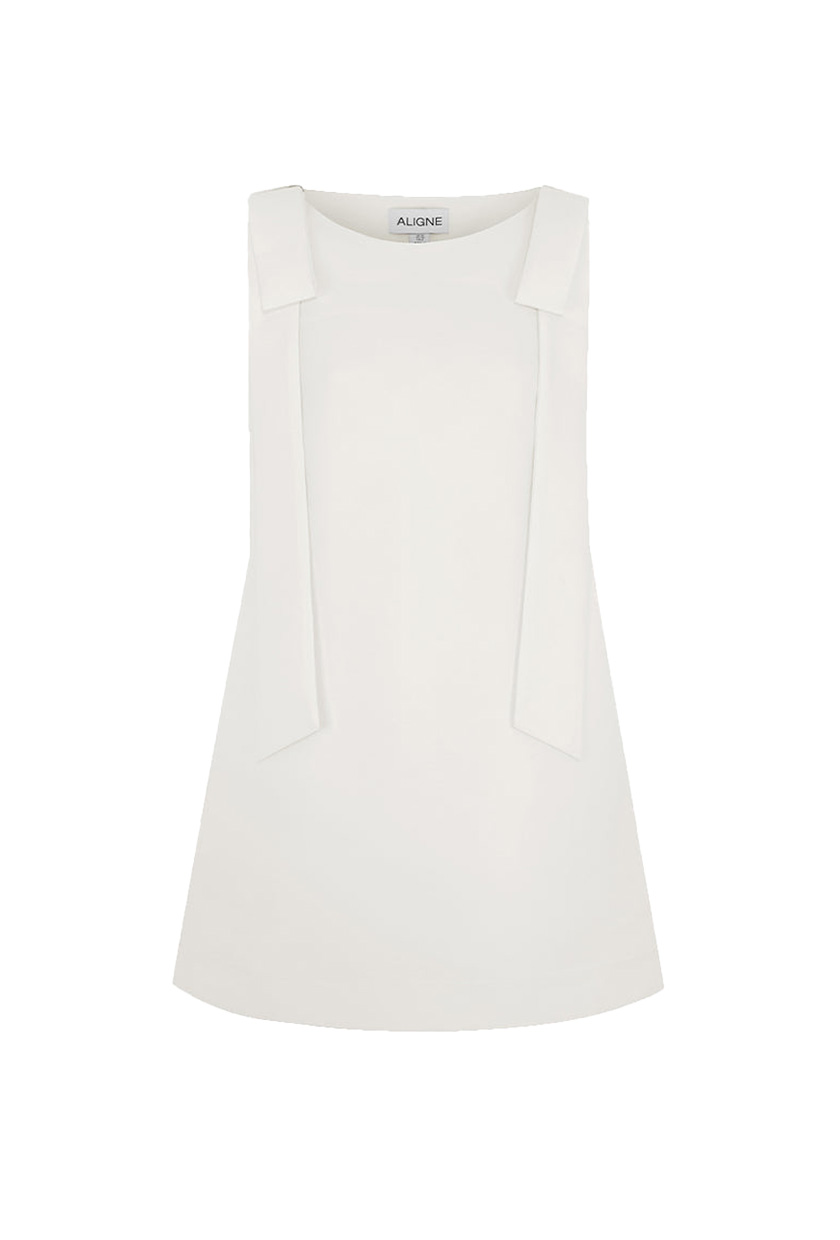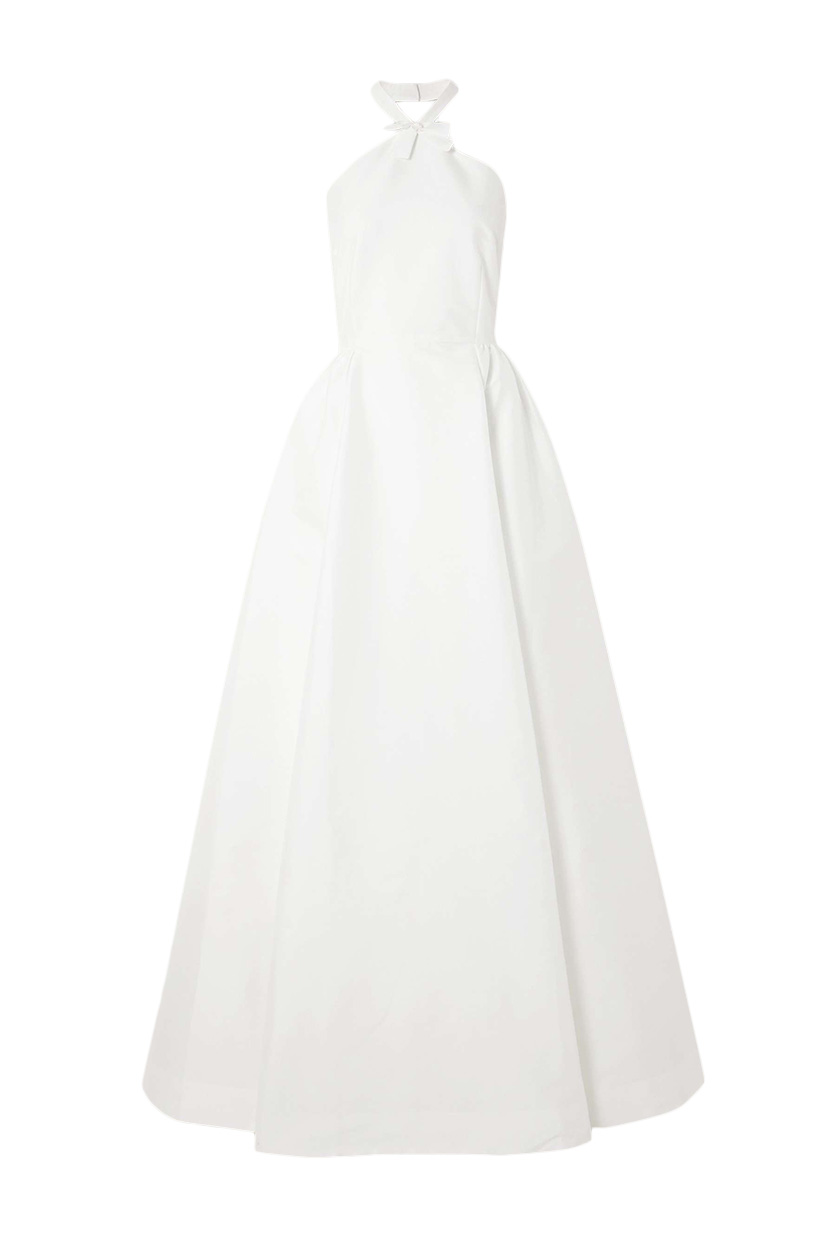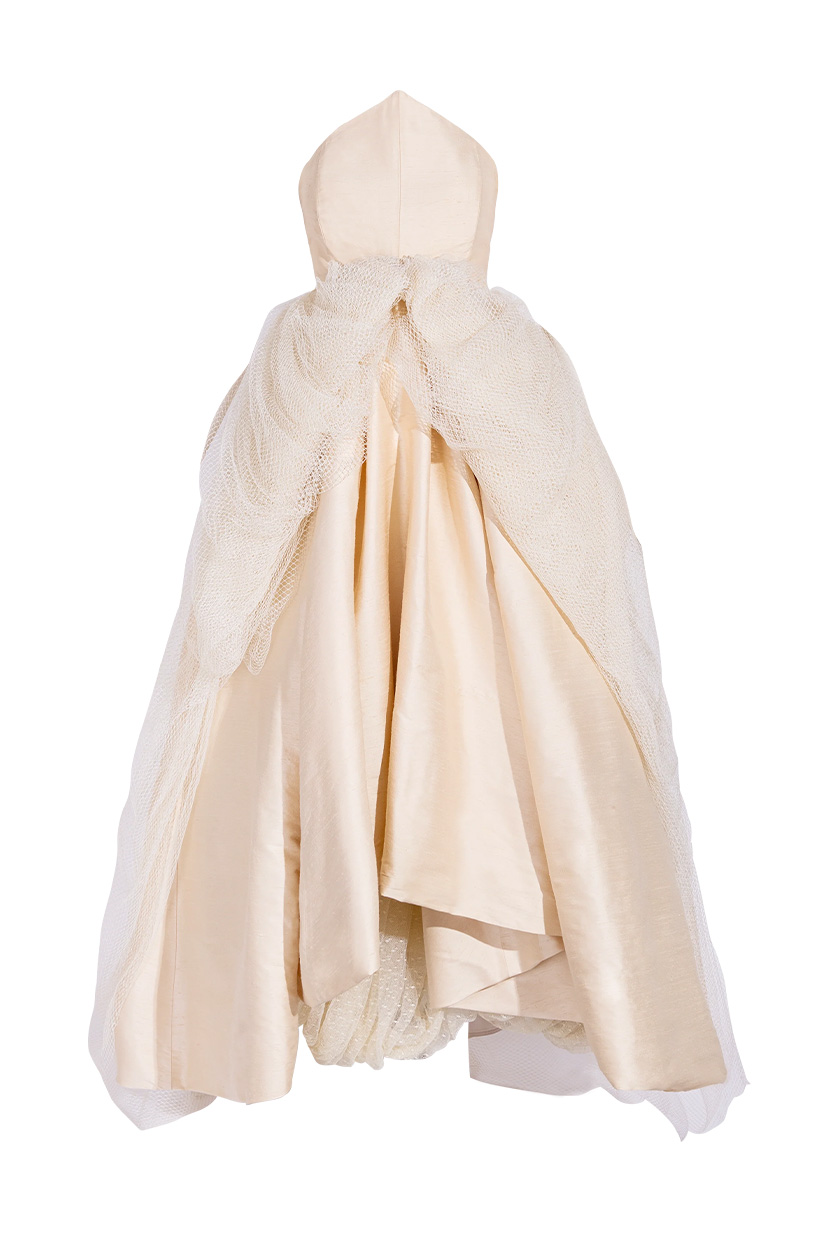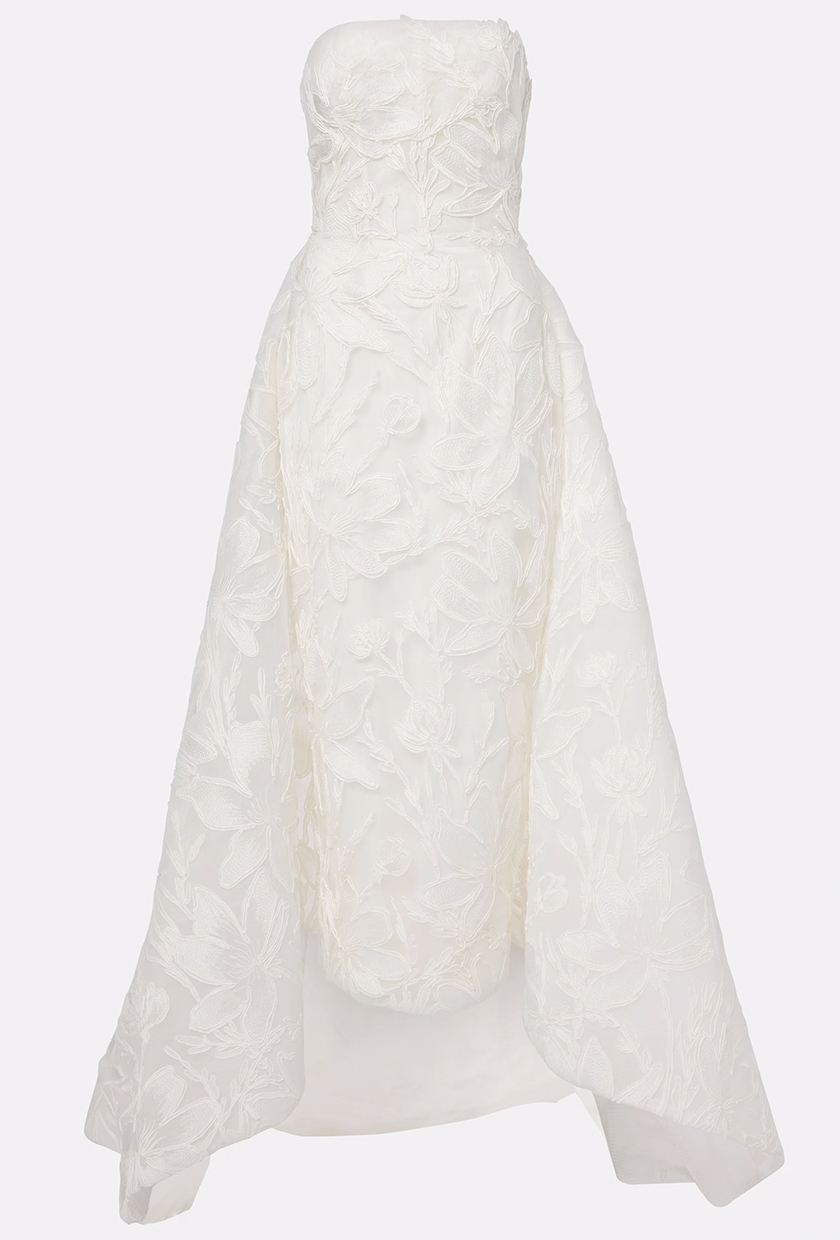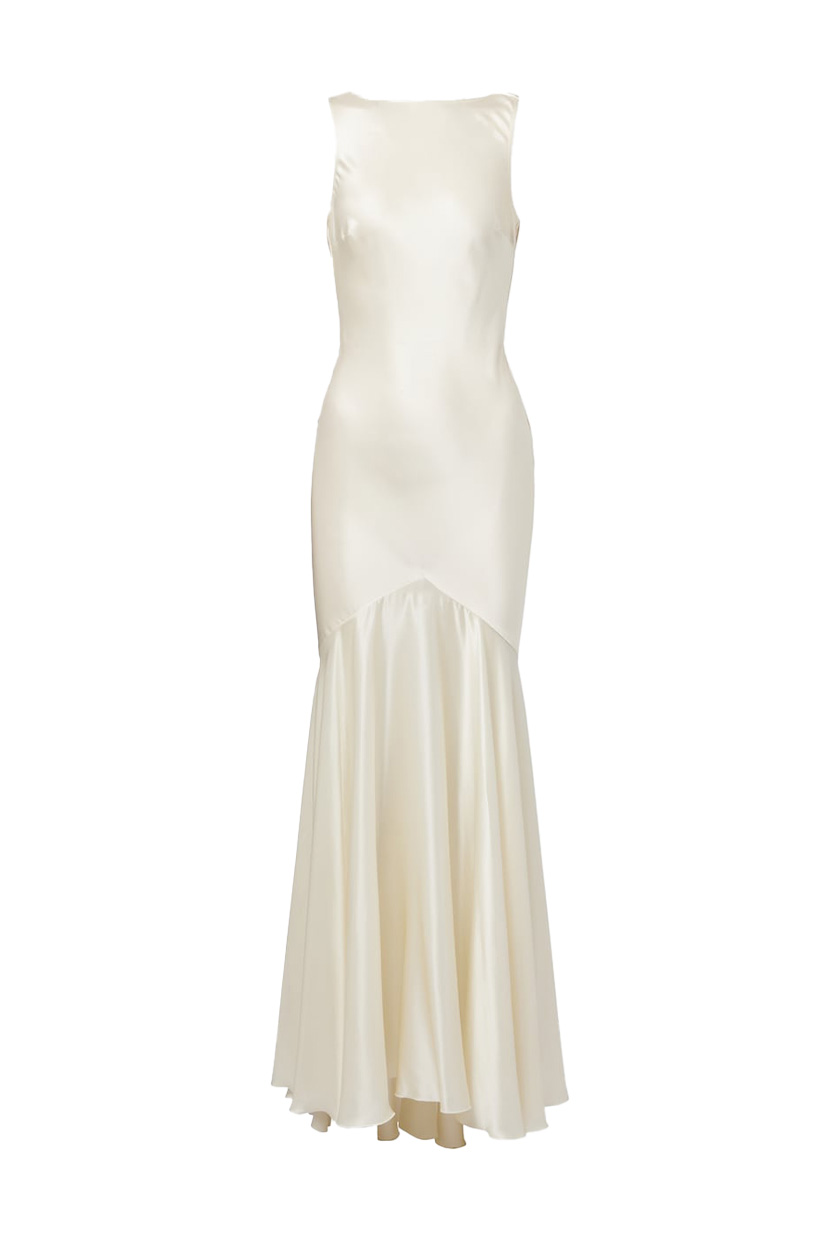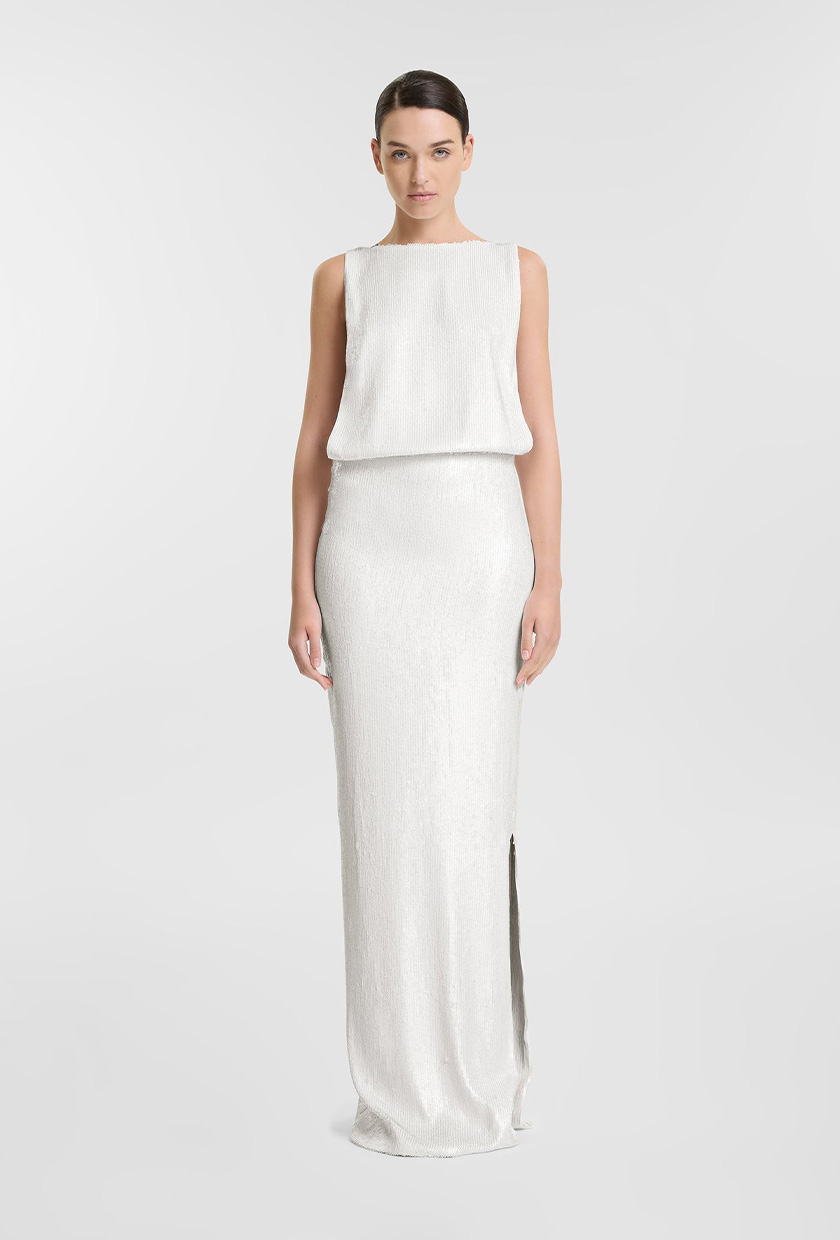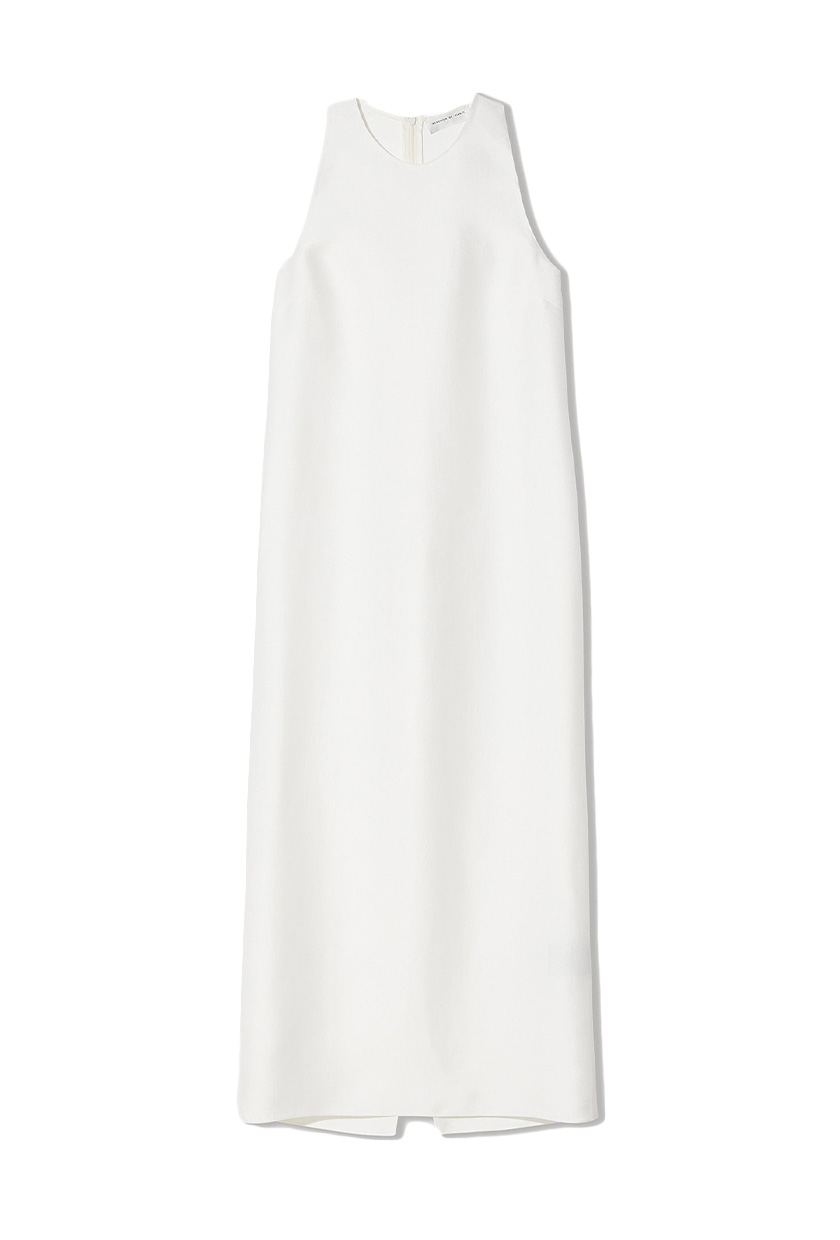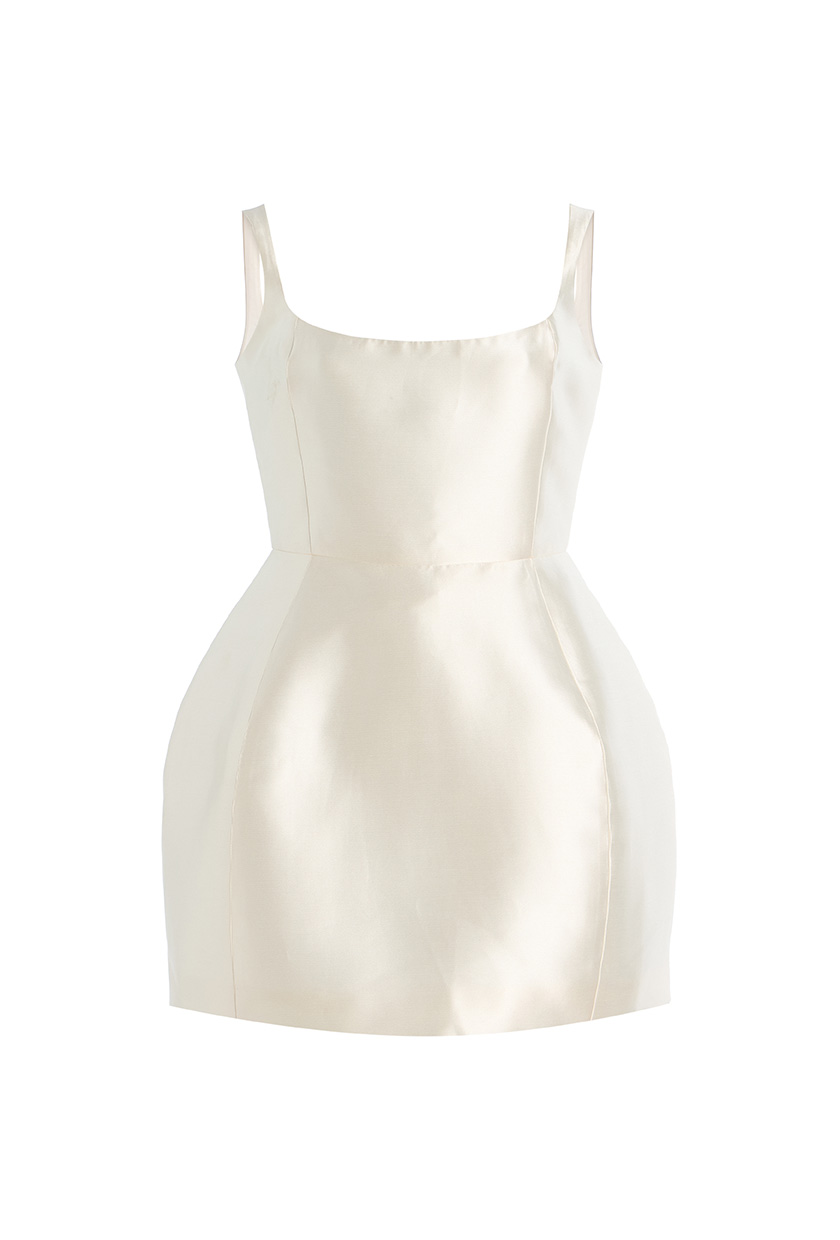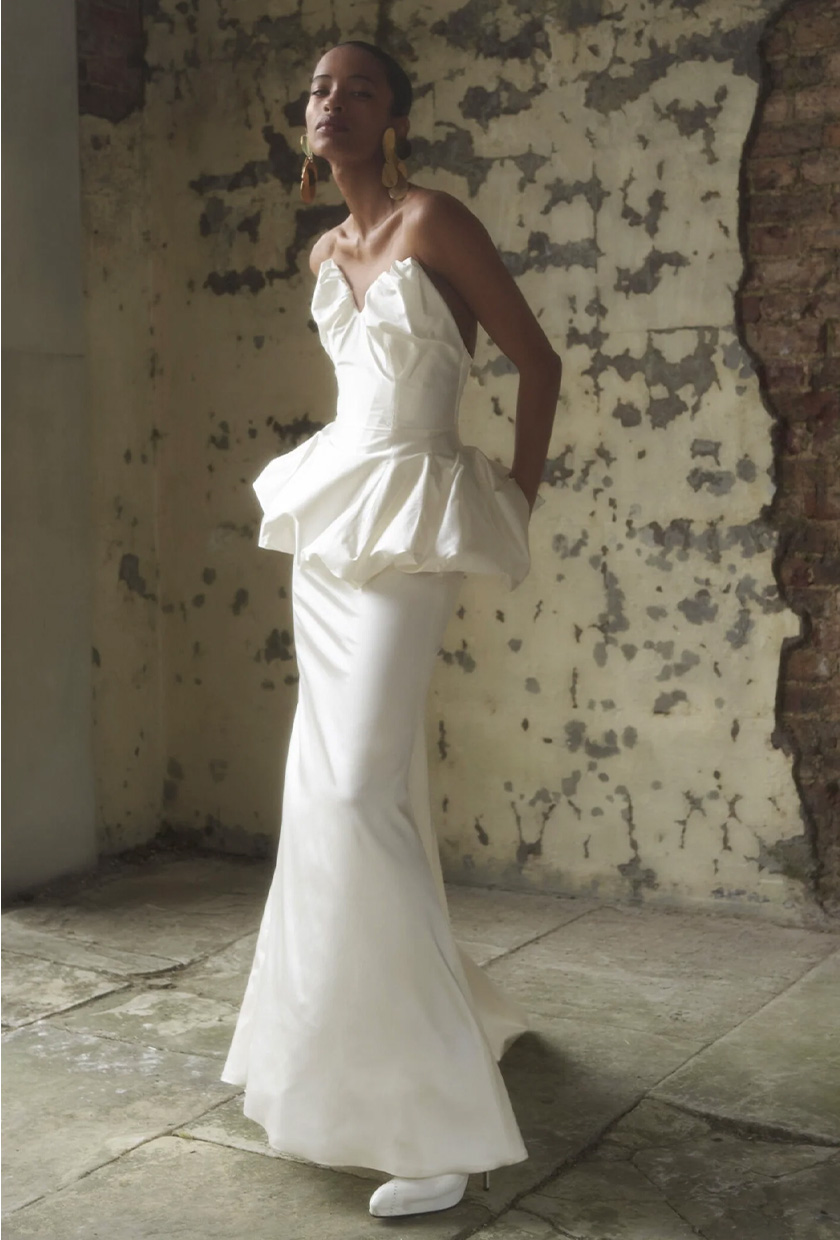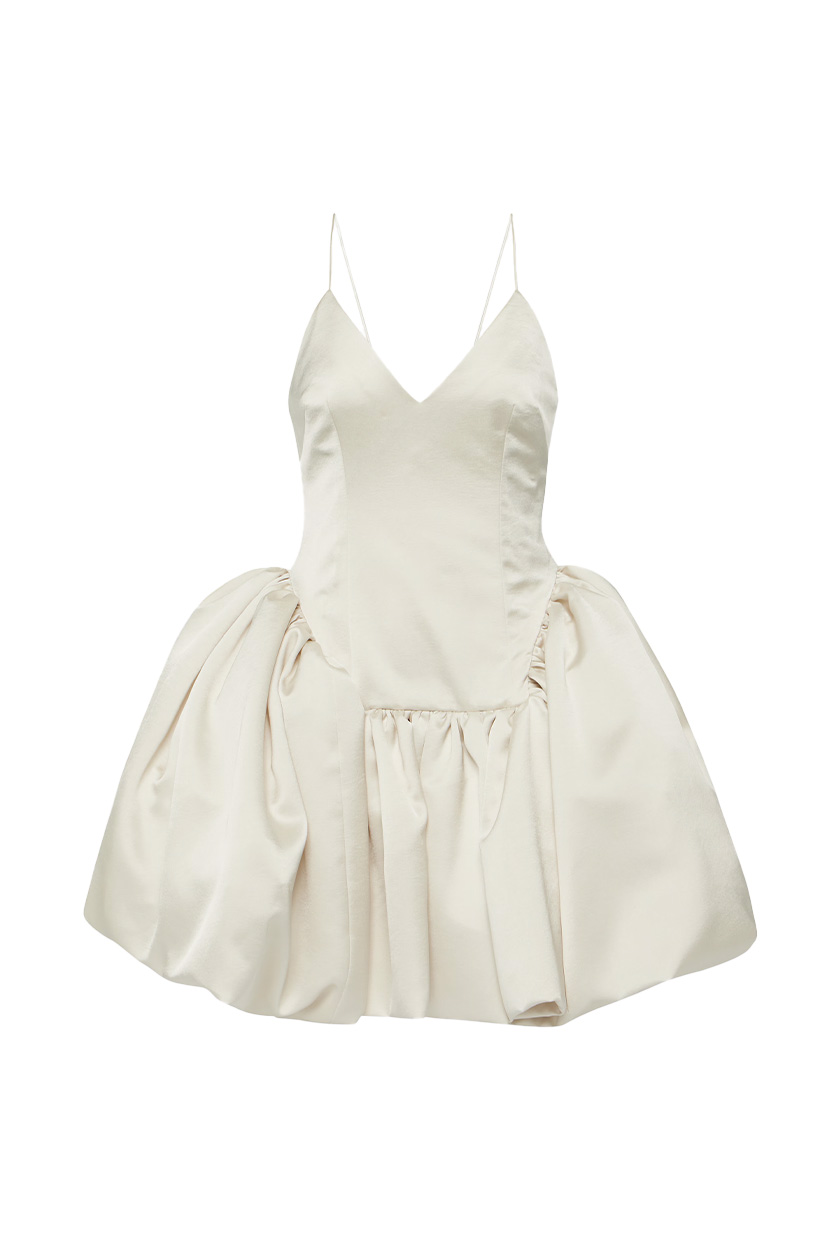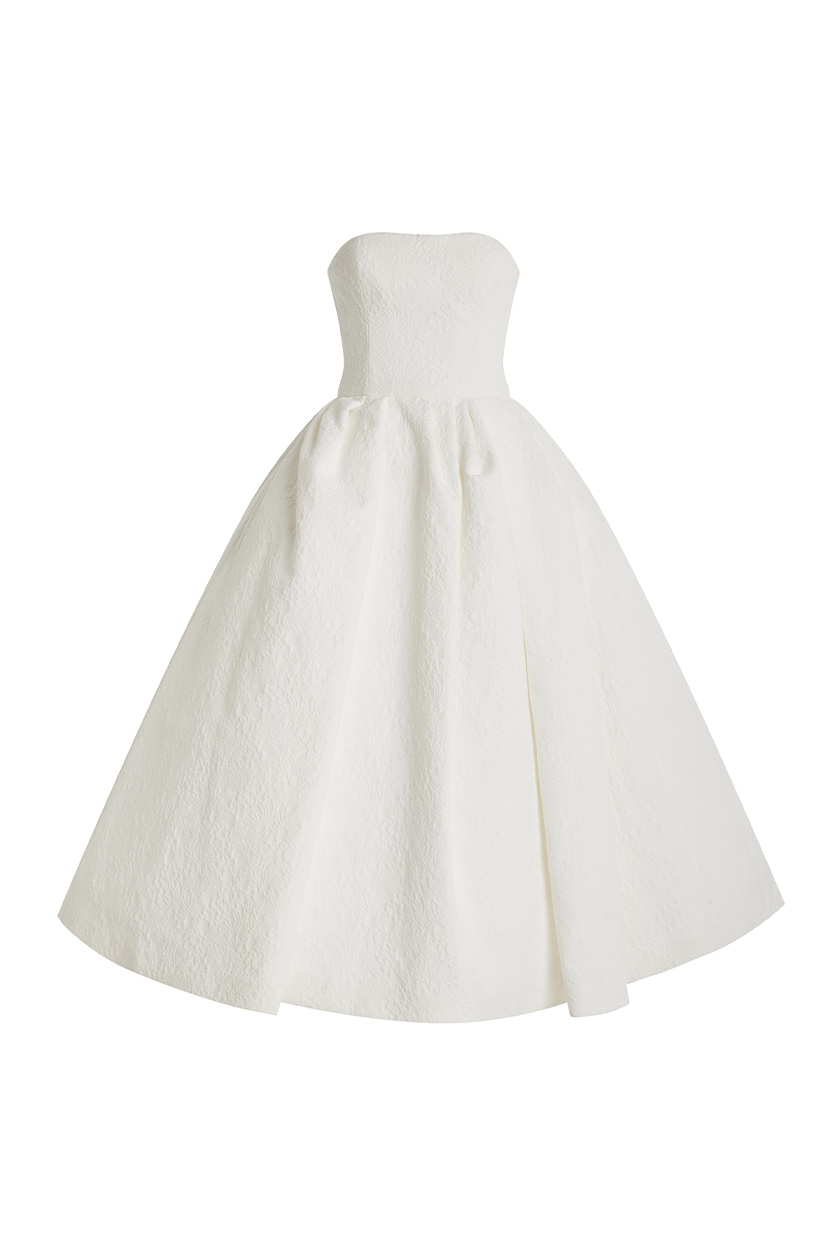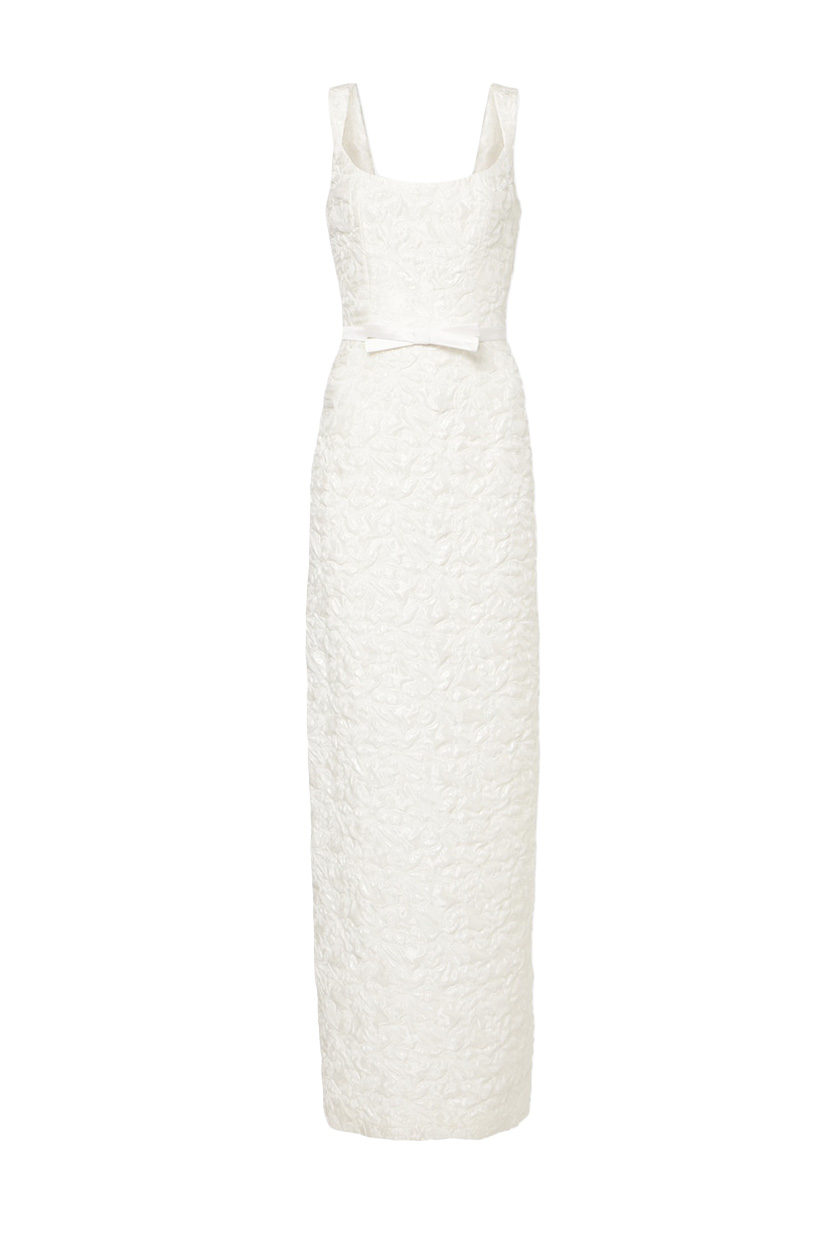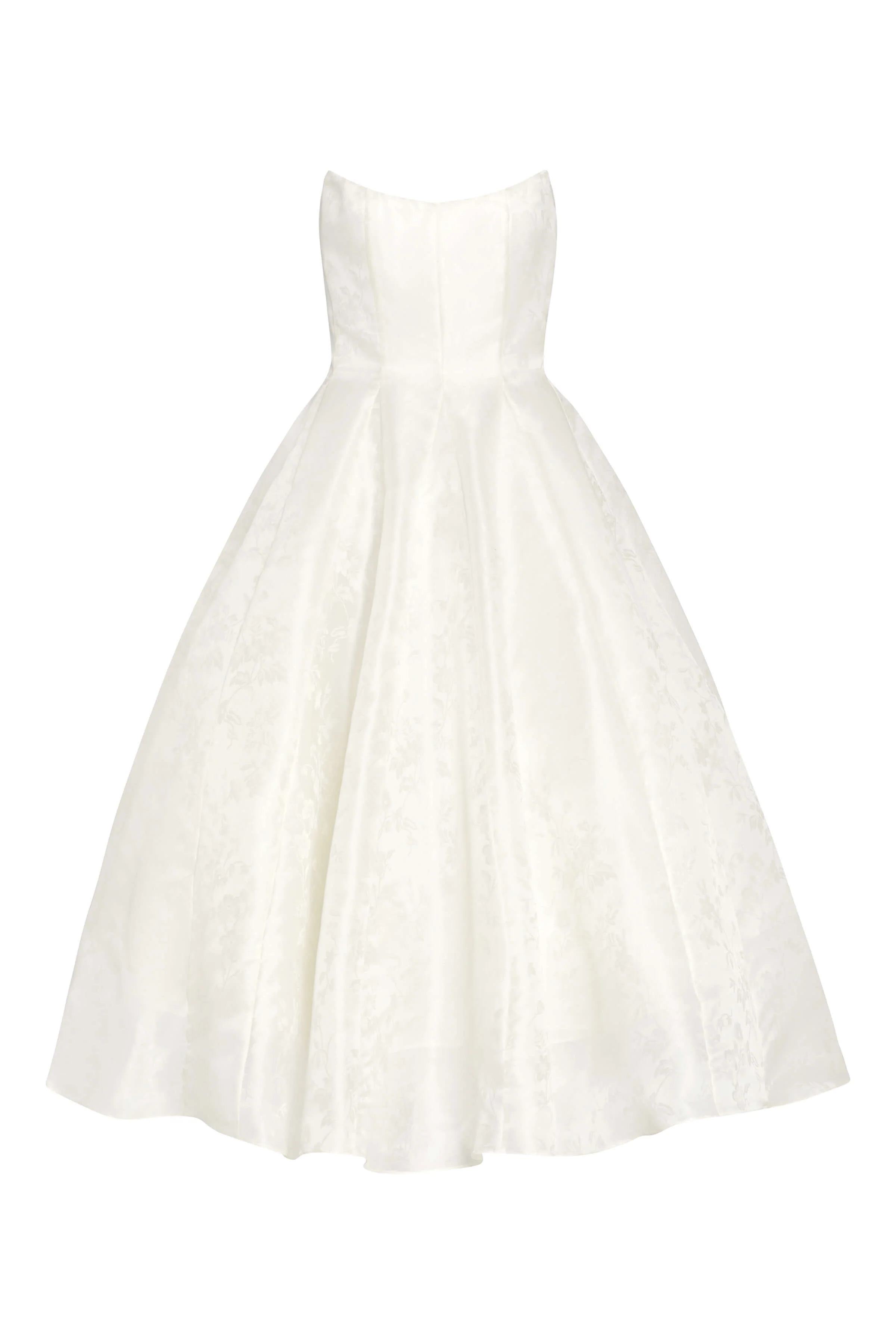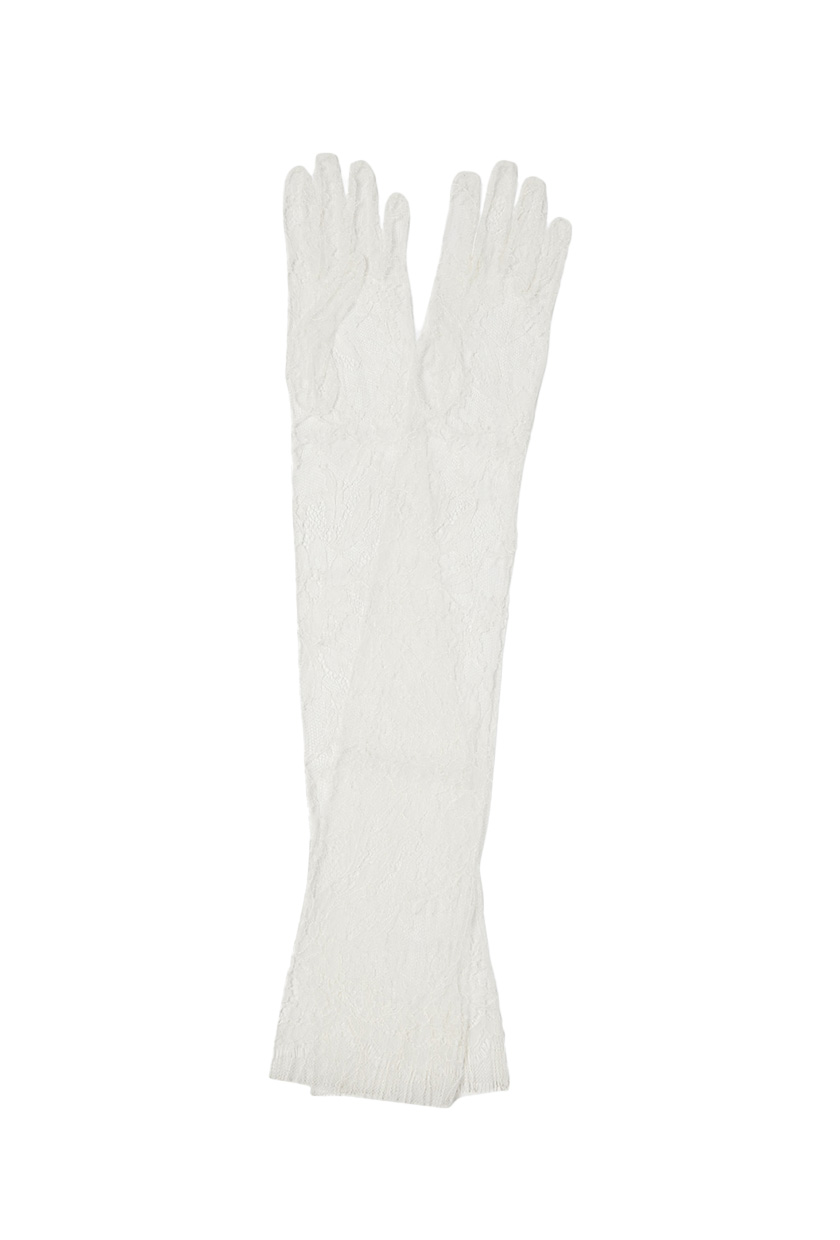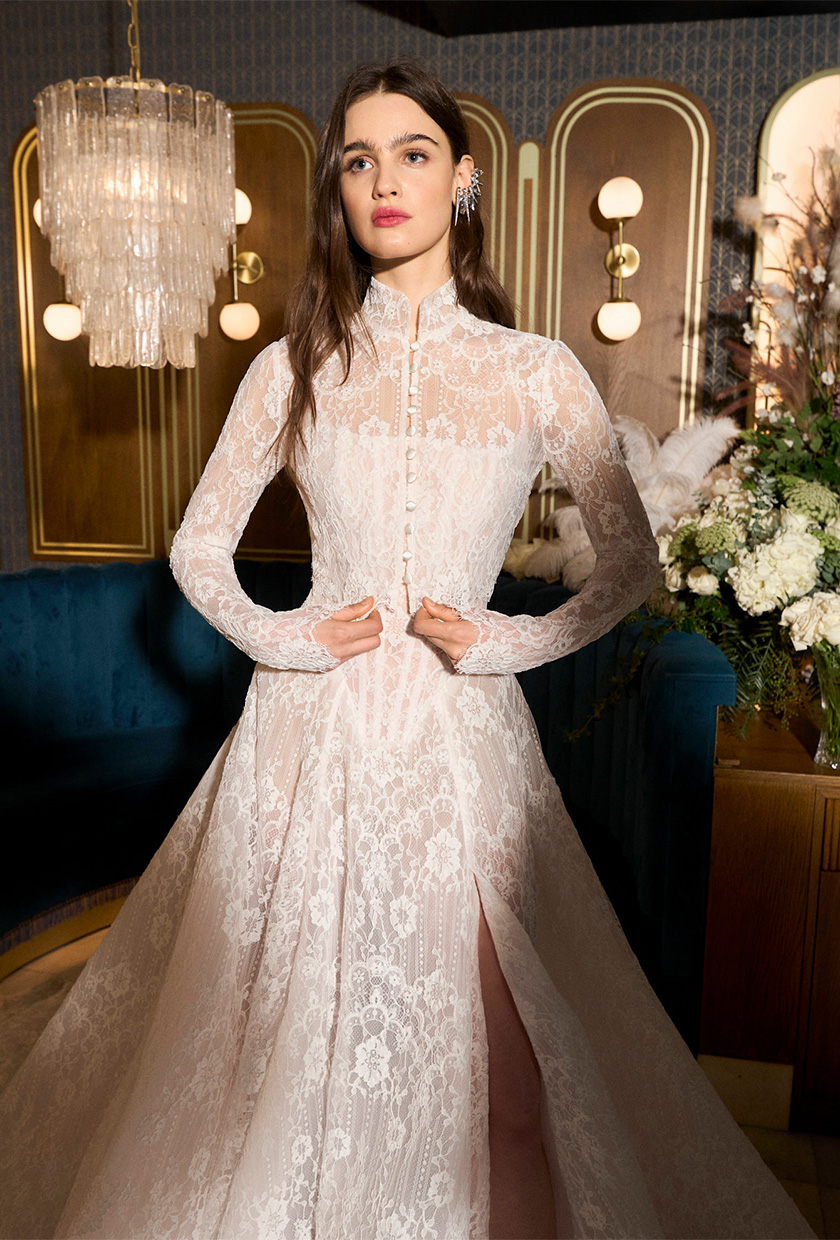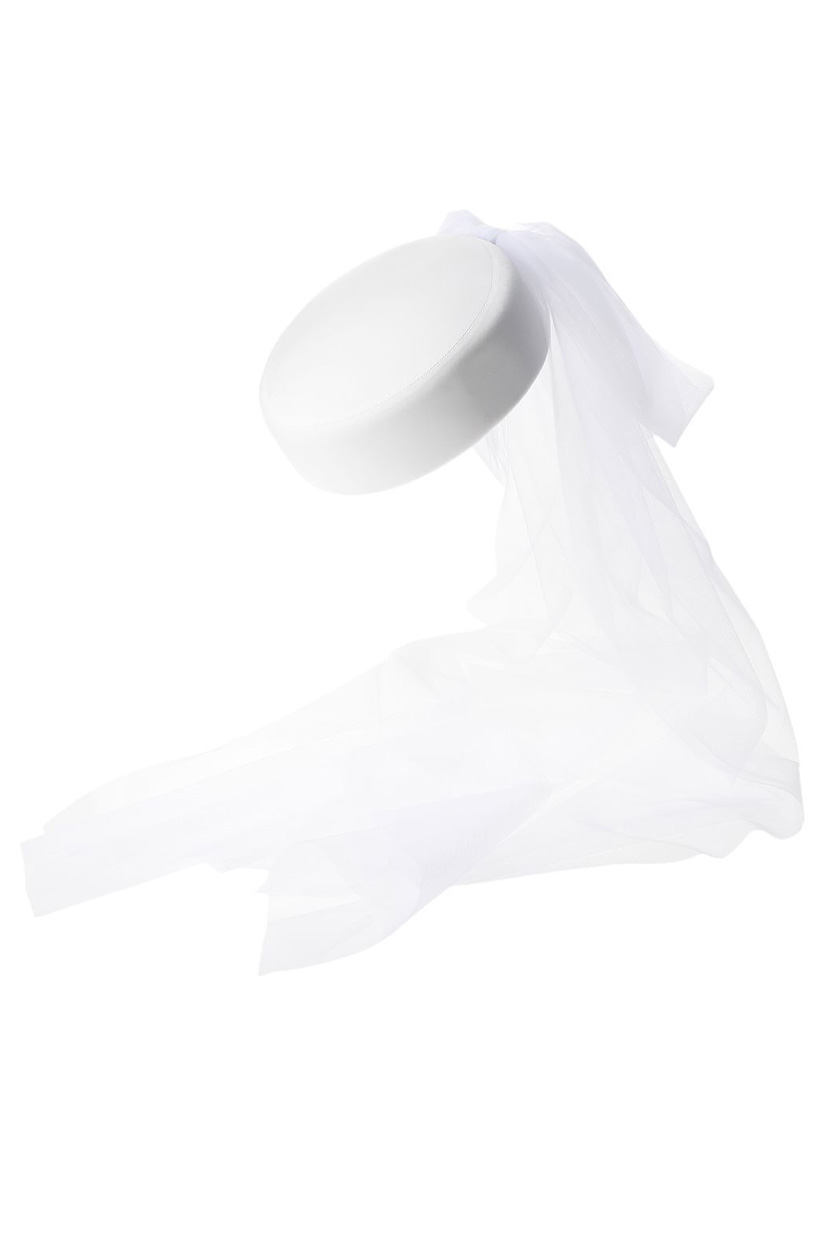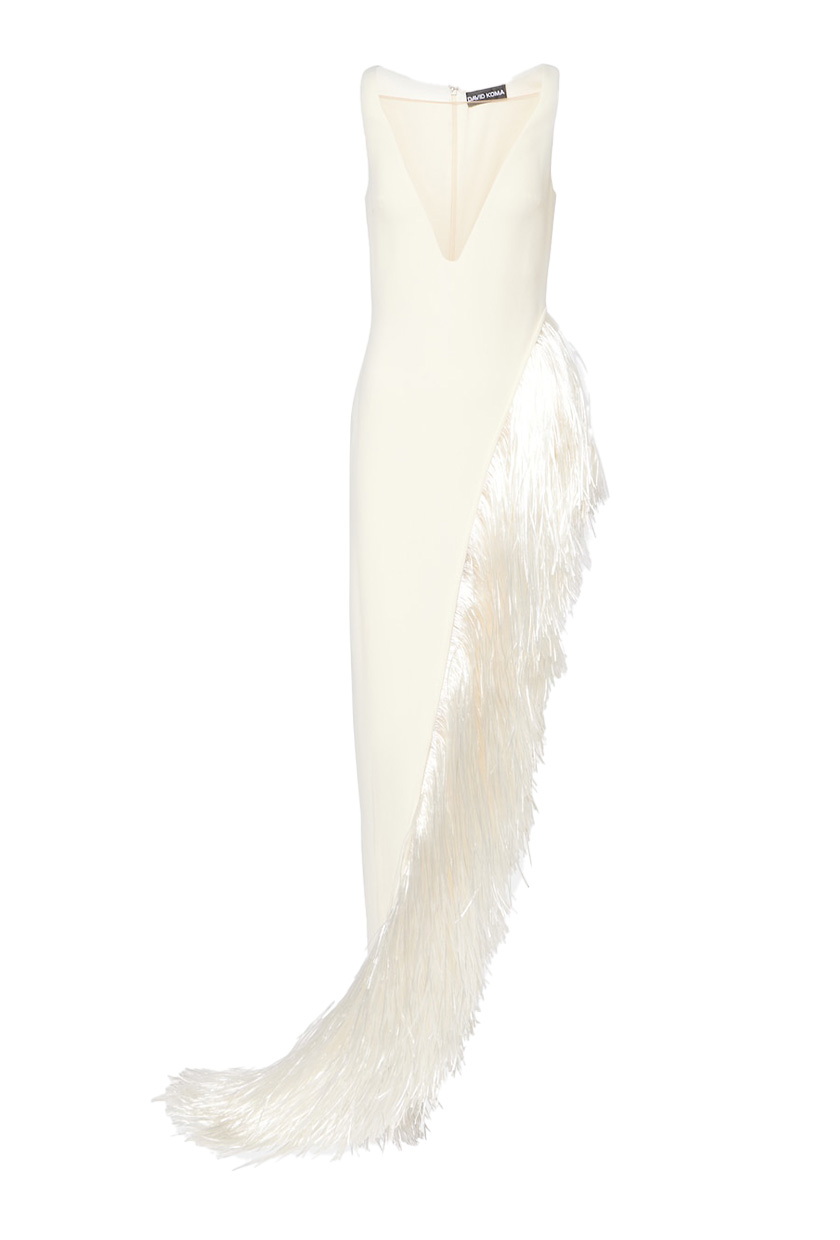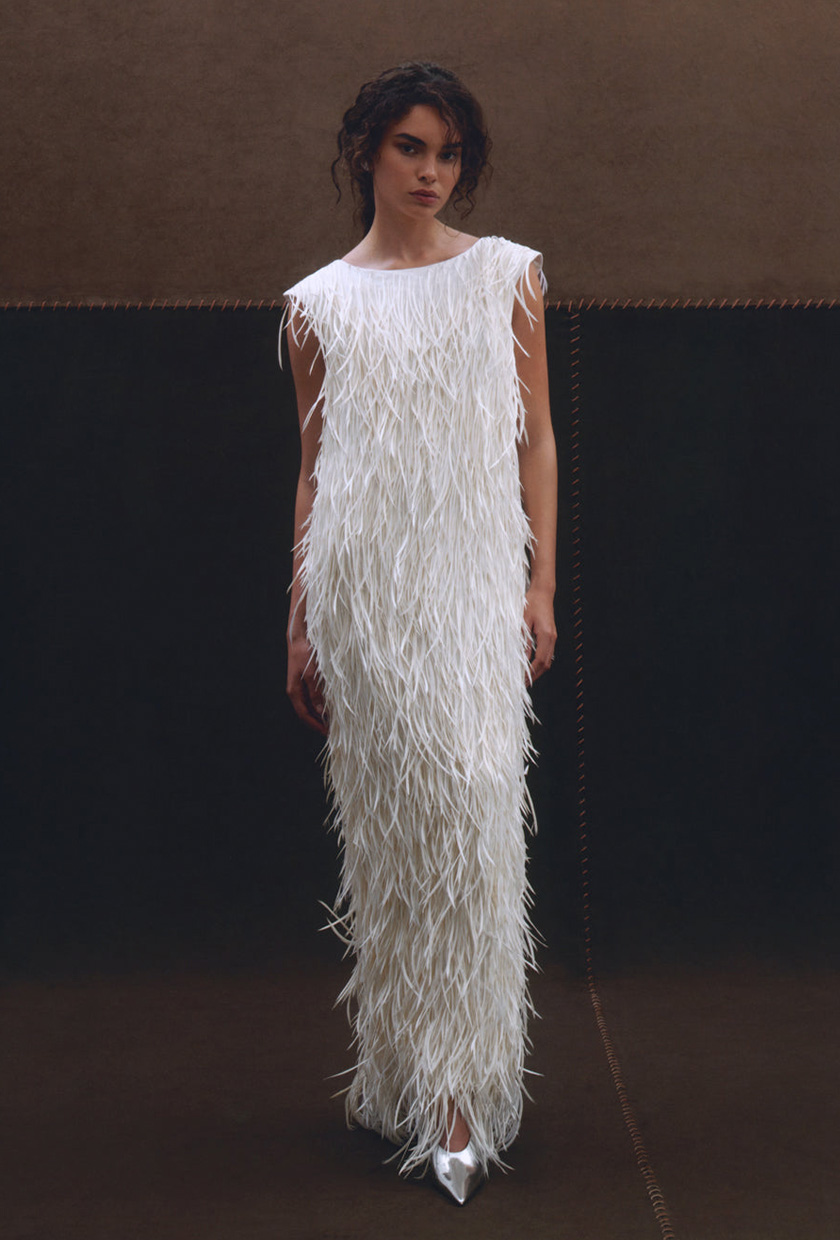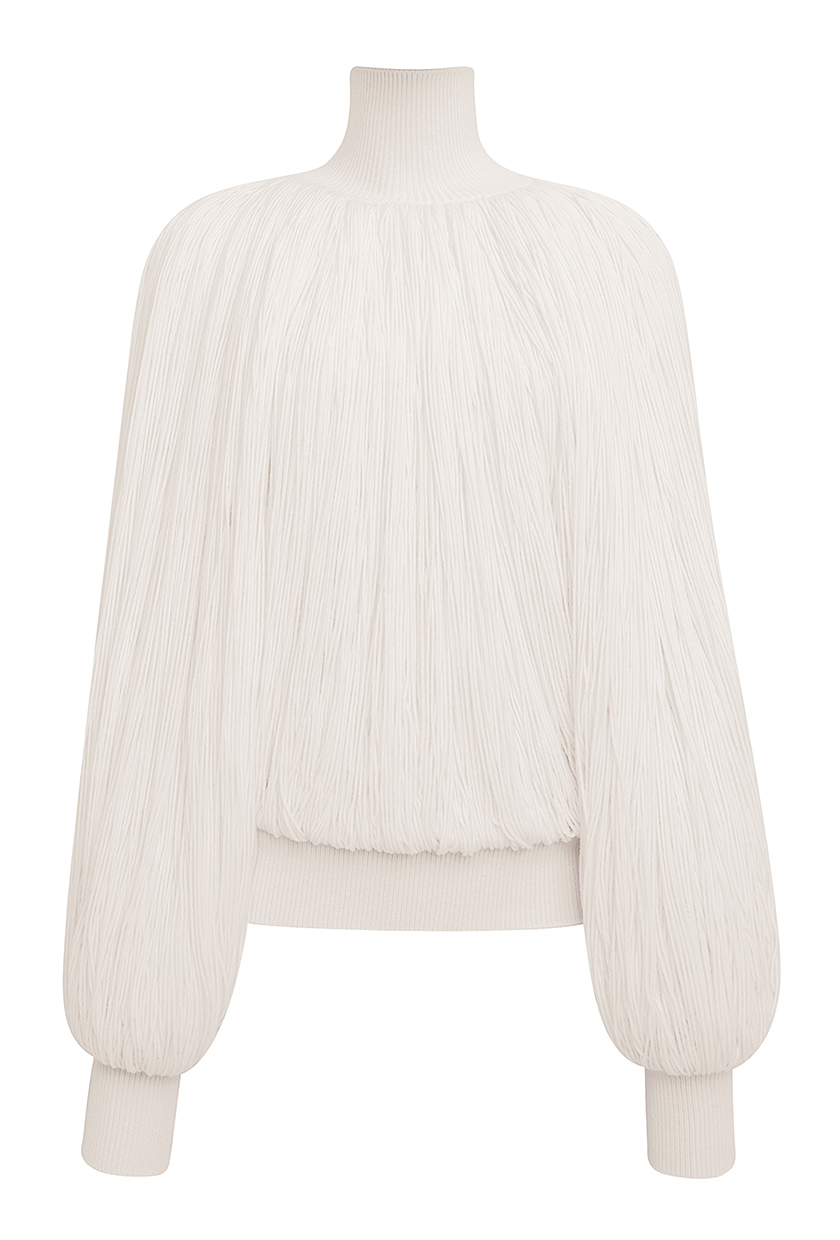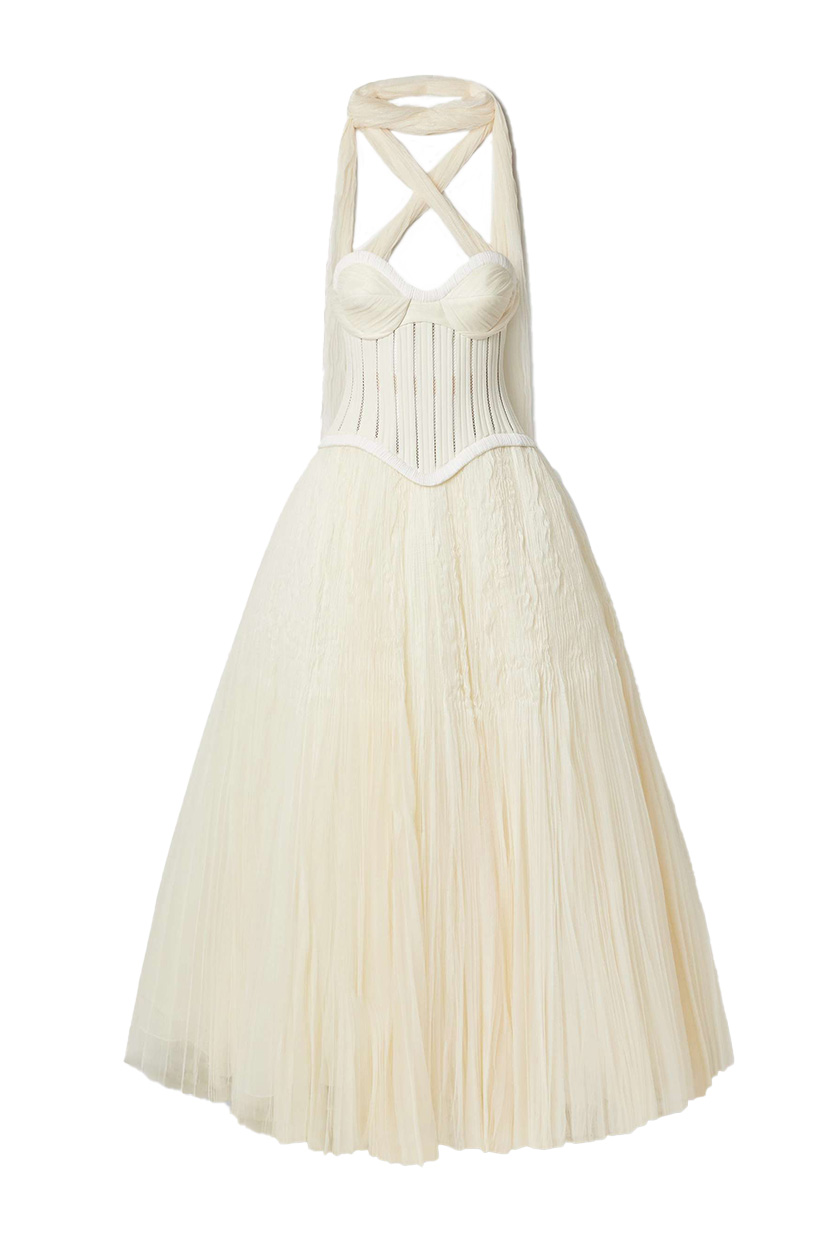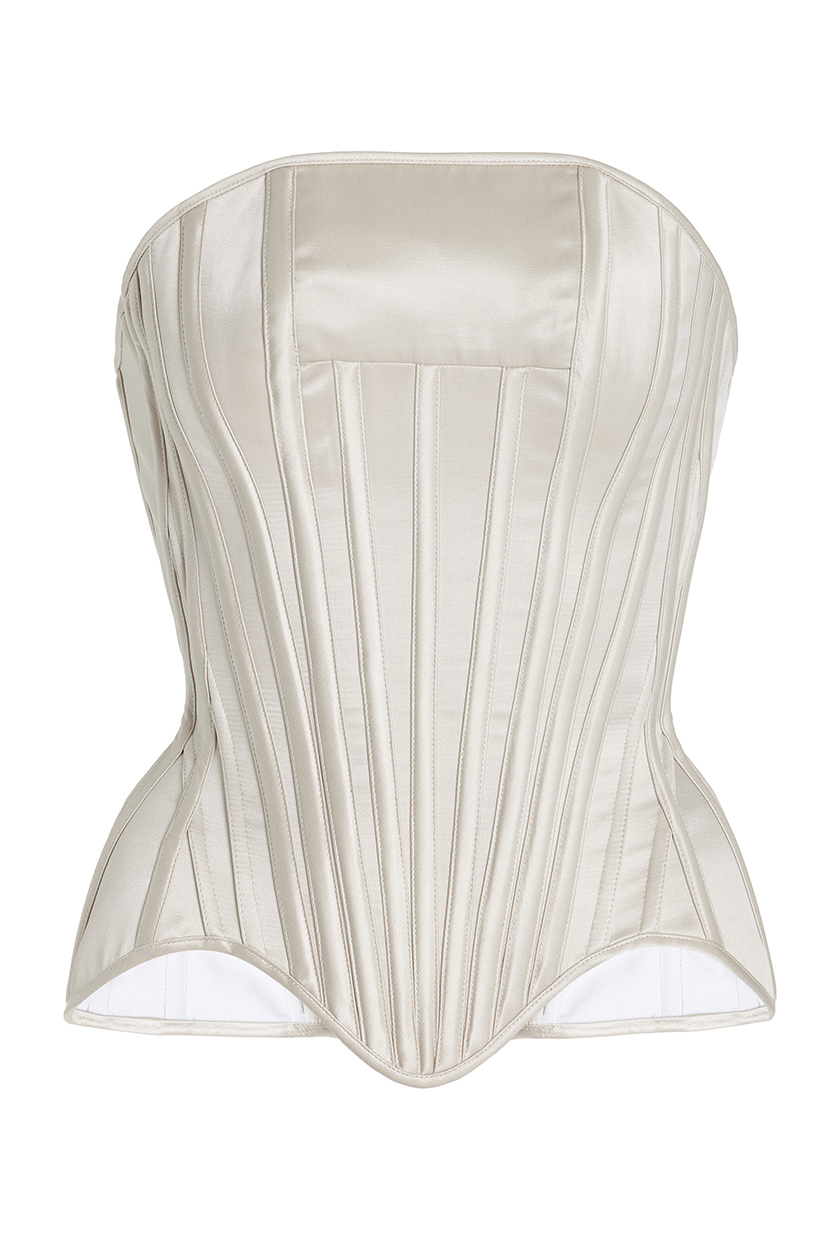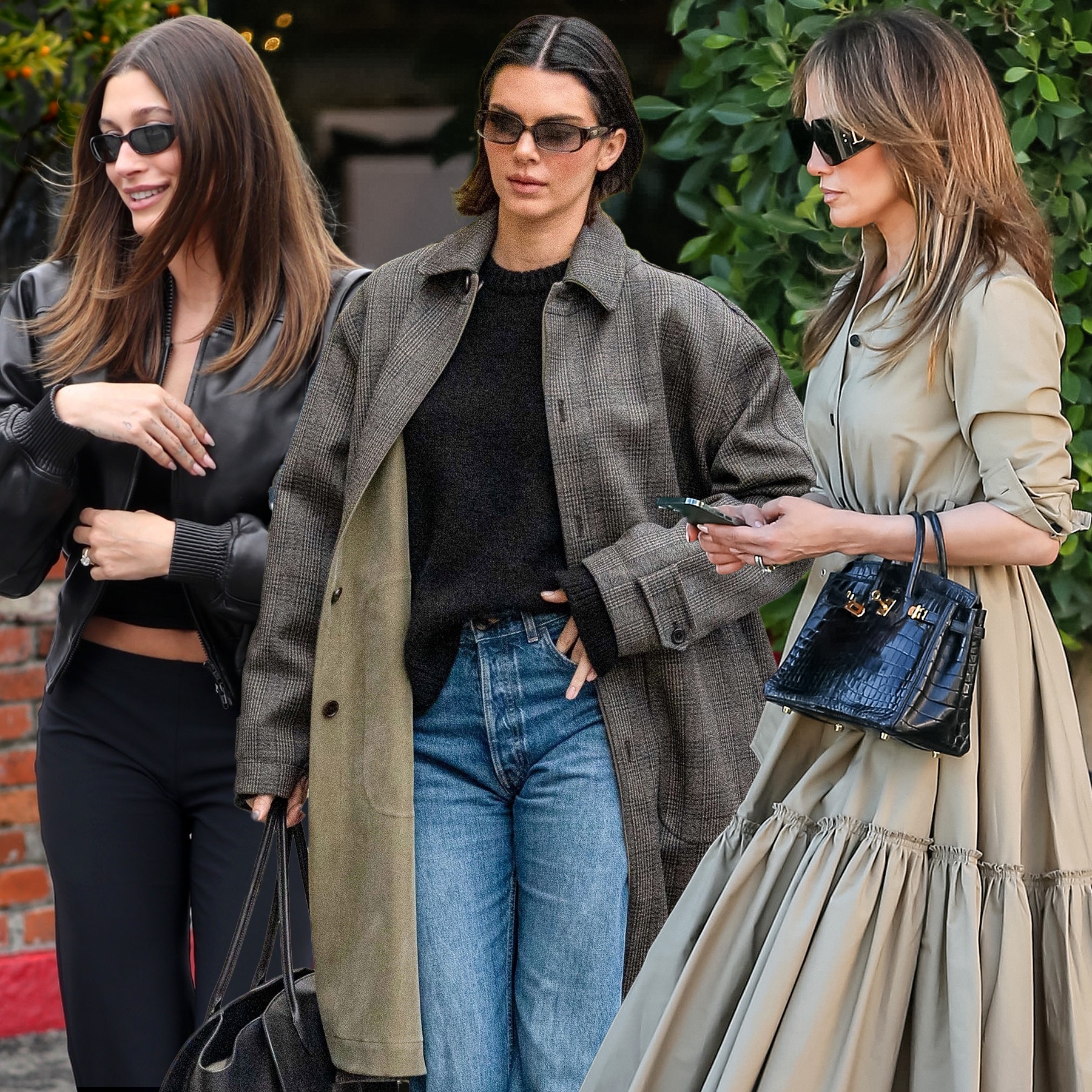Every Major Wedding Trend Set to Define Bridal Style in 2026
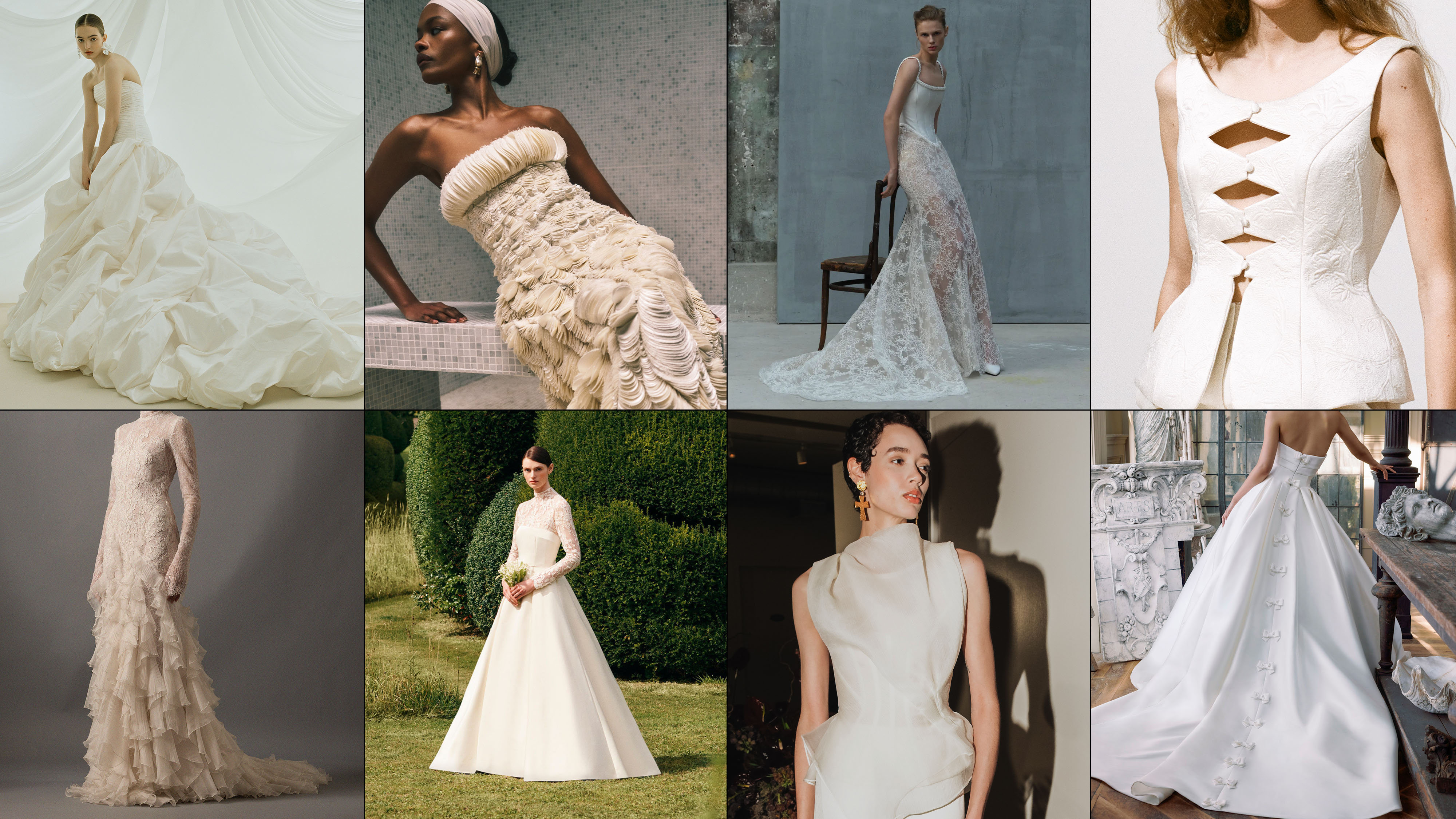
Wedding season is upon us as we head into the spring and summer months—the buzziest time of the year for couples to tie the knot. While we have yet to see which wedding trends will unfold in 2025, we already have predictions about where bridal fashion is headed next year. At spring 2026 Bridal Fashion Week this month in New York, designers presented their latest visions for the height of cool wedding style. Who What Wear editors were there in person to get a first glimpse at what is new and next in bridal fashion.
Some of this resulted in updated riffs on recent bridal trends. Drop-waist dresses evolved into grand, dramatic gowns finished with bubble skirts and basque waists. Bows were presented in practically every possible iteration. Corsetry was dialed up even further with sculpted bodices built into wedding dresses as well as two-piece sets pairing corset tops and coordinating skirts. We also saw some themes carry over from the larger fashion space—namely, the sense of nostalgia that is sweeping the fashion world as designers look back to the golden age styles of the 1950s, the return of peplum silhouettes, and a focus on tactile textures and experimental fabric techniques. Ahead, read more on the biggest bridal trends to know for 2026.

Bows have long symbolized celebration, joy, and the promise of a new beginning. Therefore, it makes sense that they have been incorporated into bridalwear for so long. Their presence in wedding gowns and separates highlights the significance of the wedding day as both a gift and a moment of shared happiness, serving as a fitting emblem for a day that marks the union of two lives.
In the spring/summer 2026 collections, bows made a memorable appearance in various forms and placements. At Idan Cohen, they were delicately perched on straps, imparting a soft, refined touch that enhanced the gown's elegance without overwhelming it. Meanwhile, Ines Di Santo took a bolder approach with oversize bows placed at the hip, commanding attention with dramatic flair, and Tanner Fletcher opted for small bows, offering a modern, understated twist on the classic. Sareh Nouri positioned bows along the backside of gowns and turned the rear into a captivating focal point, and Viktor&Rolf embraced a maximalist approach, enveloping entire dresses in bows for a playful yet sophisticated statement that perfectly captured the exuberance of the occasion.
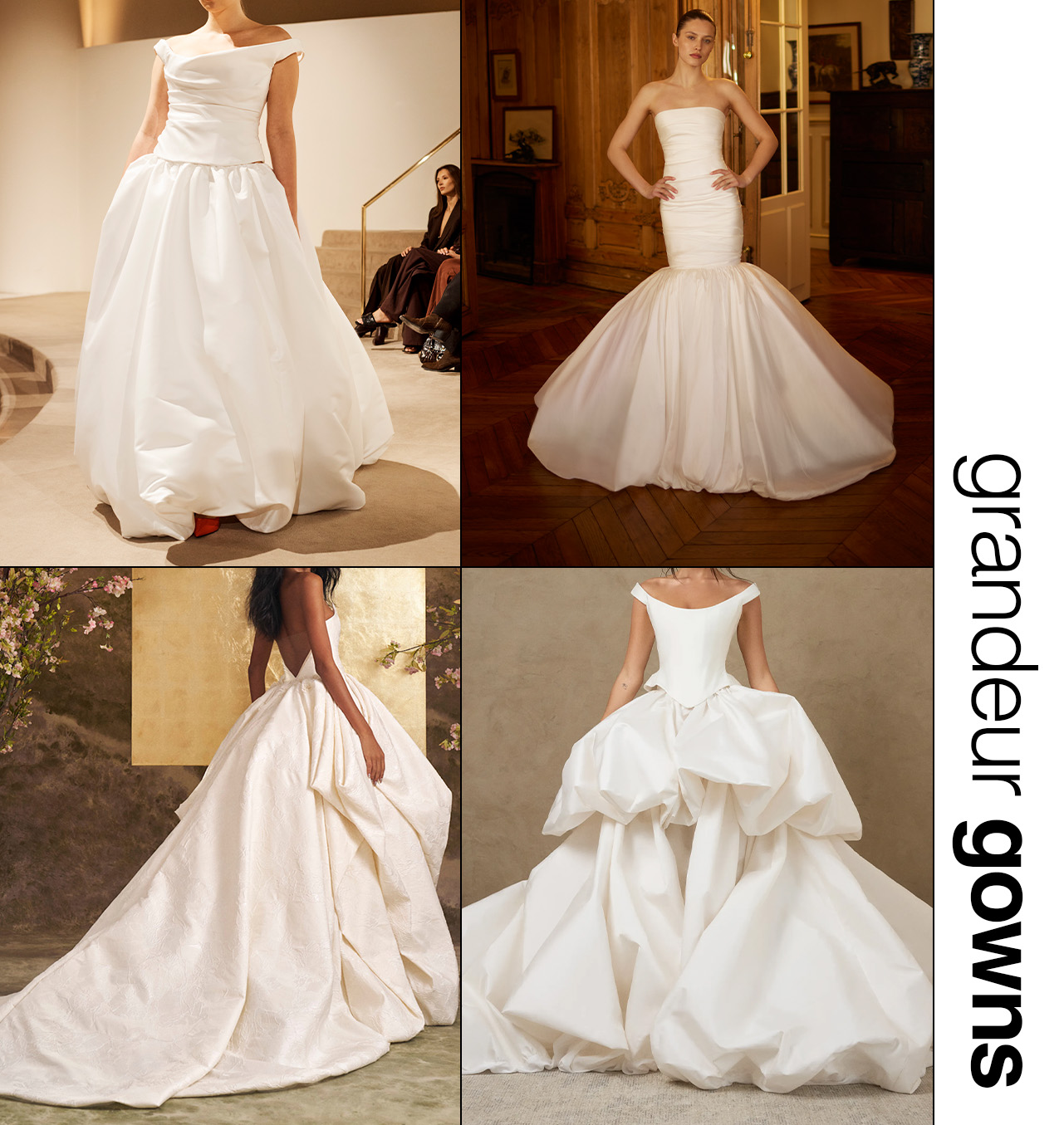
On the ready-to-wear runways, pared-back minimalism has defined many seasons. In recent collections, however, we've seen style take a turn toward opulent maximalism. A similar swing is happening in the bridal fashion space. In past seasons, we saw the prevalence of '90s-inspired wedding gowns, which put an emphasis on simple, streamlined silhouettes, but this is changing. Last year, we tracked the rise of voluminous drop-waist dresses, and for 2026, this is evolving to gowns that can only be described as grand. They're voluminous, they're impactful, and they're dramatic—perhaps a nod to the rise of '80s glamour and lavishness. Some designs incorporate bubble-skirt silhouettes, including the XXL puffy gowns at Katherine Tash and Marmar Halim. Ines Di Santo showcased a heavily layered version, Dana Harel debuted a mermaid silhouette, and Khya concluded its runway show with detachable voluminous skirts.

High-neckline gowns emerged as a defining trend on the spring/summer 2026 bridal runways, offering a sophisticated alternative to the more revealing, low-cut designs that have recently dominated bridal fashion. This resurgence of the high neckline—whether in the form of a turtleneck, halter-neck, or draped high neck—reflects a broader cultural shift toward modest dressing. However, this shift is not one of concealment. Rather it's about empowerment, individuality, and the freedom to dress for oneself rather than conforming to the gaze of others. Most importantly, these silhouettes emphasize the natural beauty of the wearer by drawing focus to the face, neck, and shoulders, creating a harmonious visual balance that enhances rather than competes with the bride's inherent radiance.
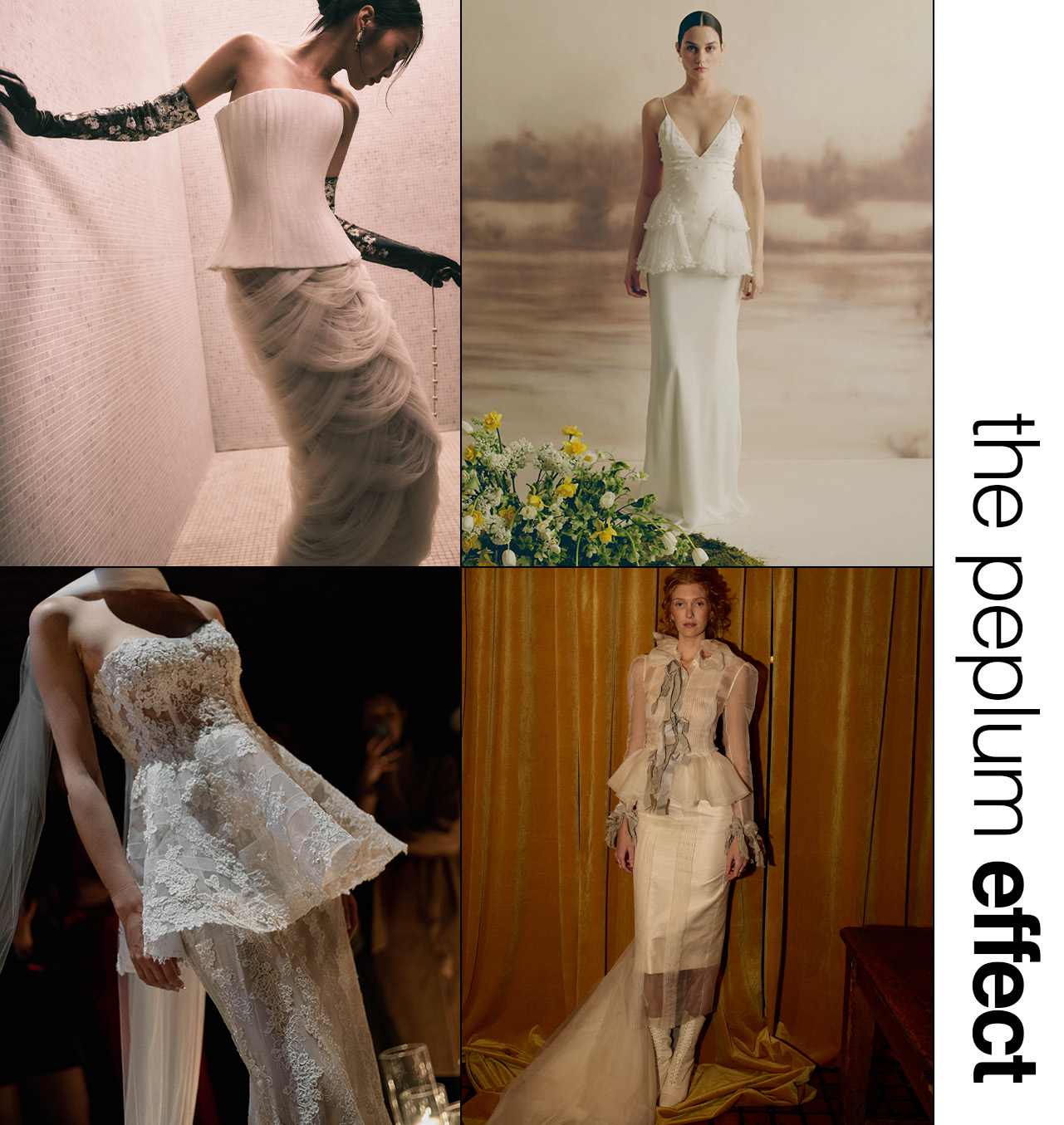
The peplum is in full effect. The dramatic shape has been absent from fashion for some years, but during spring 2026 Bridal Fashion Week, it returned in full force. At Lein, a bodice top was finished with cutouts and covered buttons. At Cinq, a sheer organza jacket was adorned with a ruffled collar, a row of bows, and a soft, fluttering waist. At Danielle Frankel, a sharp, sculpted corset was paired with a draped maxi column skirt. At Markarian, a long slip dress was affixed with hip-accentuating frills. At Francesca Miranda, there was a fluted strapless lace top and matching skirt. The varying takes on the peplum silhouette not only demonstrated how big the trend will be in 2026 but also showcased its versatility and range of occasions to wear one throughout the wedding weekend. Perhaps a peplum jacket for the courthouse, a gown for the ceremony, and a minidress for the after-party.
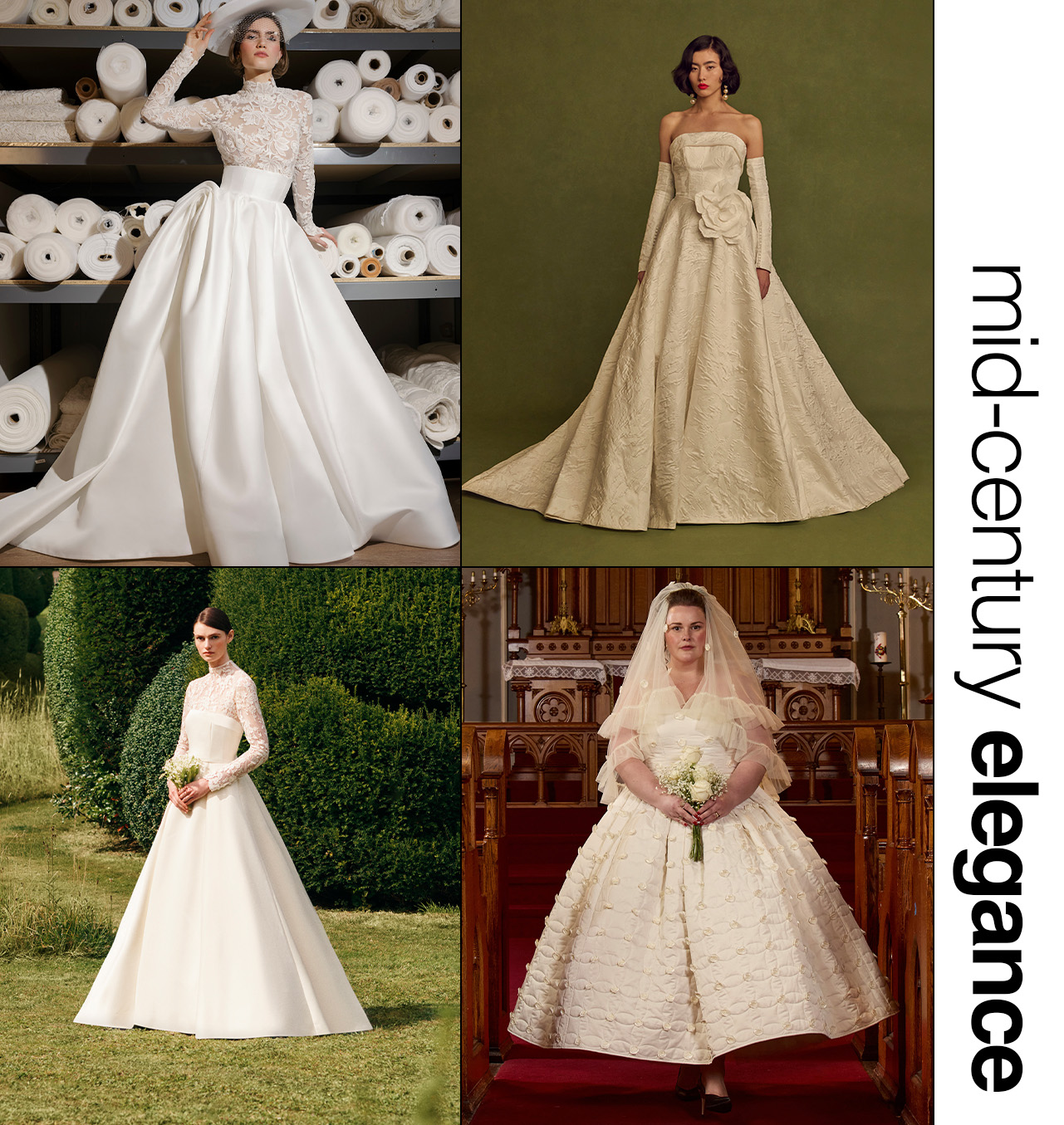
An interesting change is happening on the runway, the red carpet, and the street style scene—a movement toward nostalgic fashion and other-era elegance. This sense of looking back has resulted in the proliferation of pillbox hats in recent collections from Prada, Elle Fanning dressed in a Givenchy look inspired by the 1952 archives for the 2025 Oscars, and an uptick in car coats, slingback heels, and hosiery as we see more elegant style among fashion insiders attending fashion month. All of this is to say that 1950s style and the elegance of mid-century fashion are making a big impact—an impact that is also translating to the bridal world.
Emilia Wickstead and Anne Barge presented bridal gowns designed with lace turtleneck tops and full pleated skirts that shared similarities with the look Grace Kelly wore on her wedding day to marry Rainier III, Prince of Monaco in 1956. Markarian showed a slew of '50s-inspired looks, including a peplum jacket and A-line skirt with nods to the Dior New Look that was originally introduced in 1947. Inspiration at Tanner Fletcher and Idan Cohen, too, felt nostalgia coded. While the style of past decades may not always transcend time, these designs have a sense of timelessness that many brides are seeking among a landscape of fleeting trends and internet aesthetics.
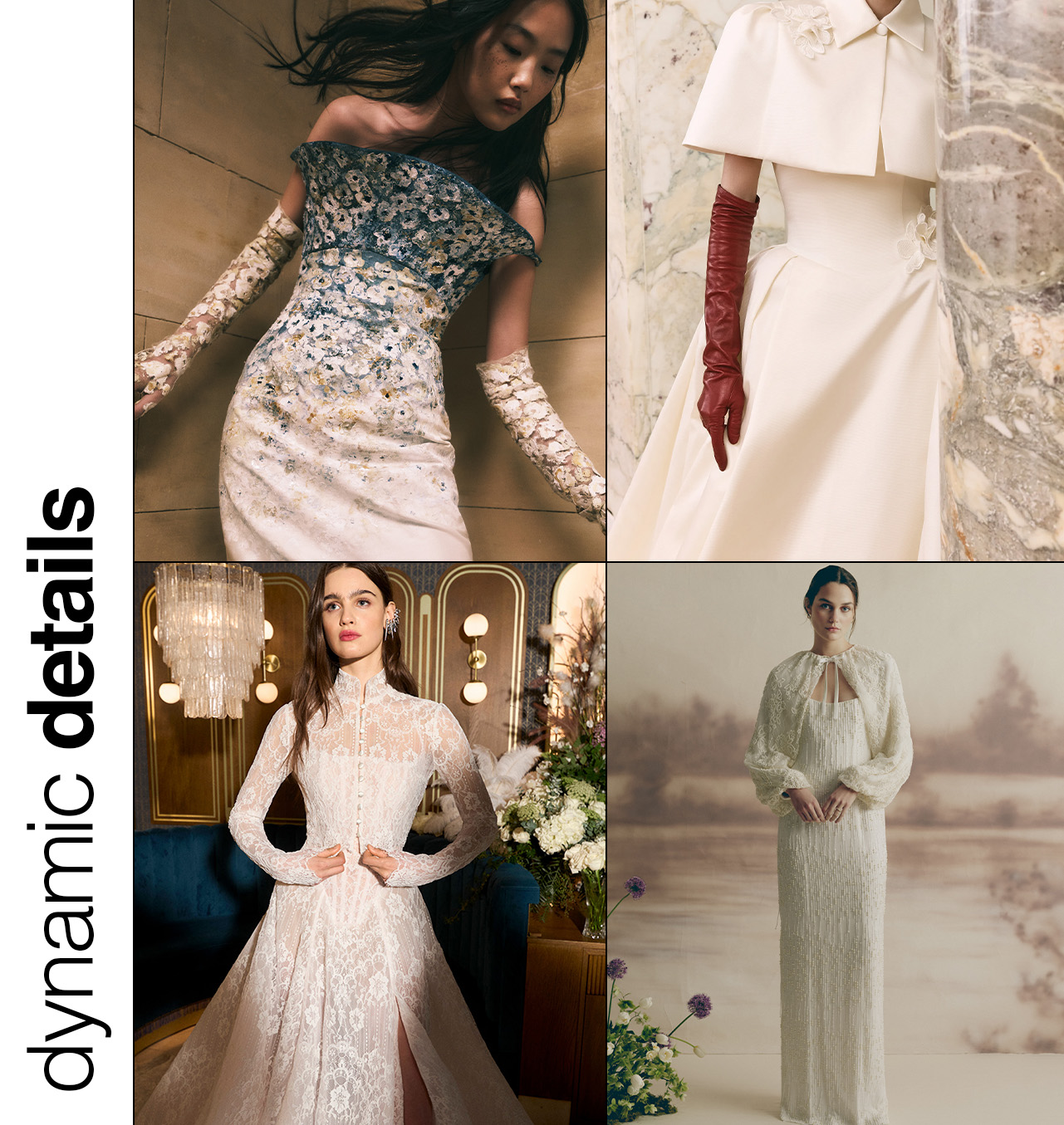
Brides are increasingly seeking ways to infuse individuality into their wedding attire, a trend that has not gone unnoticed by designers. In the spring/summer 2026 collections, the balance between customization and simplicity emerged as a defining theme. Detachable accessories, such as skinny scarves also seen in street style, elegantly encircled the neck and cascaded behind the gown, offering both drama and adaptability. Likewise, convertible toppers—such as capes, shrugs, and boleros—were in abundance, providing brides with an ideal means of transitioning seamlessly from the ceremony to the reception. Opera gloves, particularly those crafted in fine mesh with hand-painted florals, introduced a contemporary texture, while veil styles, notably hooded versions, reimagined traditional bridal aesthetics. These dynamic details underscored a philosophy of intentional embellishment, where removable elements enriched the overall look without overshadowing its inherent simplicity.
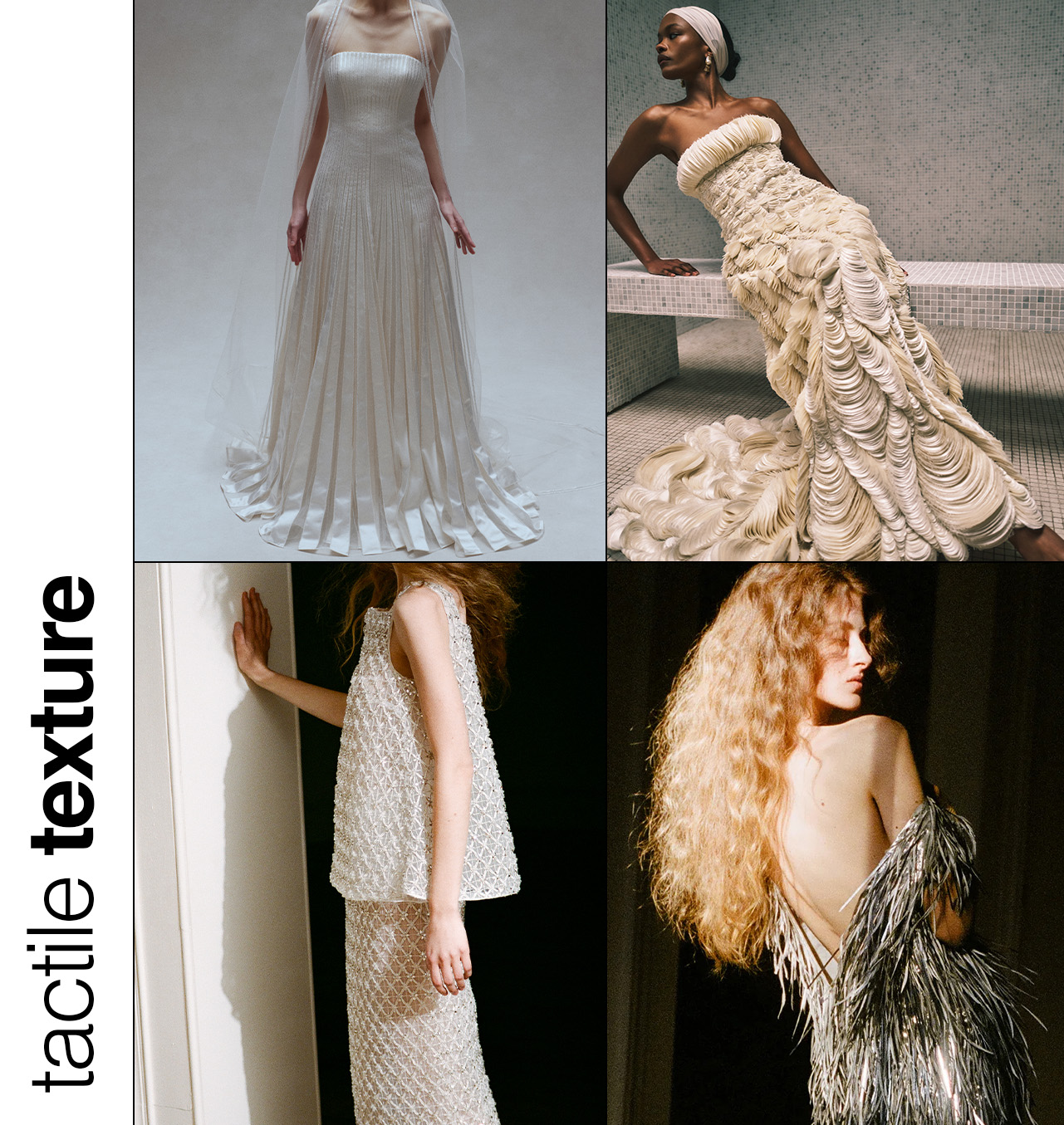
Just as designers like Brandon Maxwell, Bottega Veneta, Proenza Schouler, and Khaite incorporated tactile textures into their spring/summer 2026 ready-to-wear collections, bridal brands followed suit by transforming wedding gowns into intricate works of art that engaged the eye.
Take Danielle Frankel, for instance, who is known for its minimalist yet unconventional approach to bridalwear. In its latest collection, the brand showcased a range of intricate fabrics that transcend the conventional. One particularly striking piece featured a strapless silhouette adorned with hand-cut silk-wool panels expertly arranged to mimic the scales of a mermaid, giving the gown an otherworldly quality. Similarly, the New York–based label Lein expanded its signature relaxed bridal style by experimenting with a diverse array of luxurious, avant-garde textures. Among the standout materials were shiny champagne Lurex paired with matte, plaster-like duchesse; richly textured Italian chenille; mohair lace; crystal latticework; and spiky chrome-painted feathers, as seen in the images above.
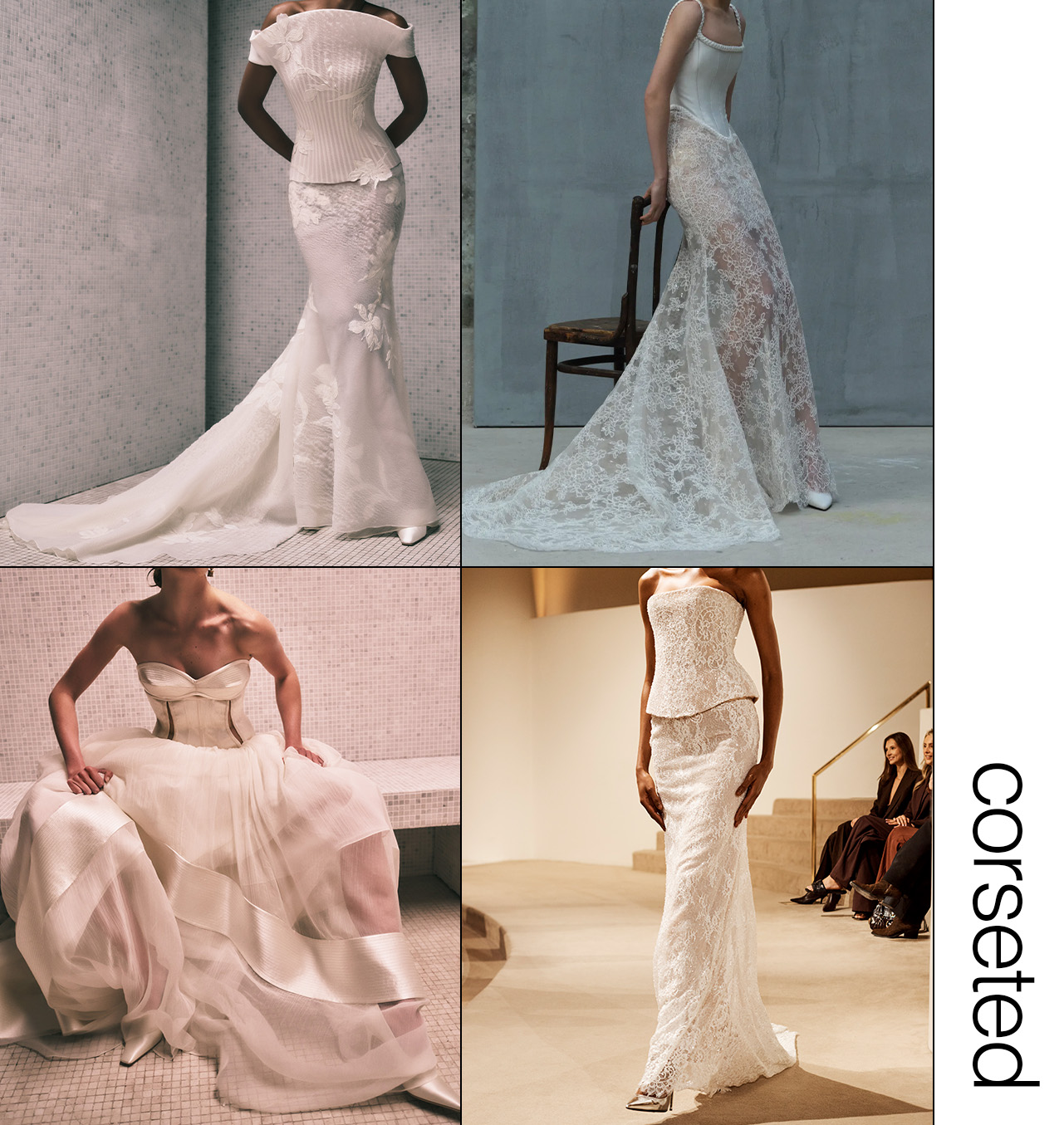
Corsets, historically symbols of stringent beauty ideals, were traditionally associated with a feminine identity that prioritizes form over comfort. However, the spring/summer 2026 bridal collections presented a fresh perspective, one in which corsetry embodied empowerment, individuality, and self-expression.
Leading this transformation were women-led houses like Katherine Tash, Khya, and Danielle Frankel. Whether through off-the-shoulder corset tops paired with matching skirts or strapless dresses featuring boning, these designers demonstrated that corsets can transcend mere restraint. They can be vibrant declarations of independence and acknowledgments of the intricate diversity of the female form. Their creations highlighted and enhanced the body's natural curves rather than smoothing or controlling them as was traditionally expected.
Kristen Nichols is the Associate Director, Special Projects at Who What Wear where she oversees luxury, runway content, and wedding features, and covers fashion within the luxury market, runway reporting, shopping features, trends, and interviews with leading industry experts. Kristen has worked with brands including Prada, Chanel, and Tiffany & Co., and her style has been featured in publications including Vogue.com, Vogue France, WWD, and the CFDA. Kristen began her career at Rodarte, where she worked on styling, photo shoots, and runway shows, and at Allure, where she moved into print and digital editorial. She graduated from the University of Southern California, where she studied art history and business, and currently lives in New York.
-
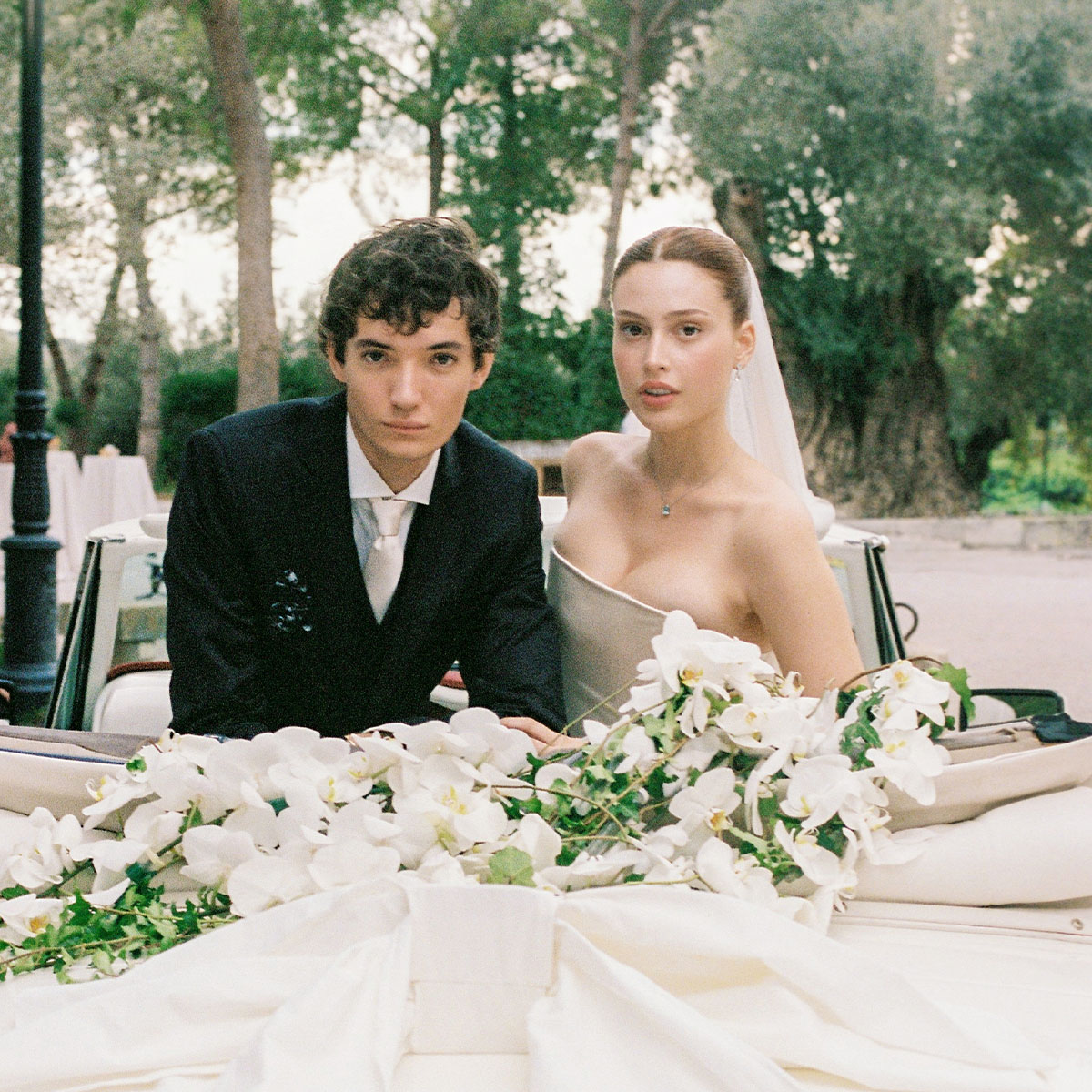 This Fashion-Designer Bride Made a Custom Gown Inspired by Marie Antoinette for Her Wedding in Spain
This Fashion-Designer Bride Made a Custom Gown Inspired by Marie Antoinette for Her Wedding in SpainSee every detail.
By Kristen Nichols
-
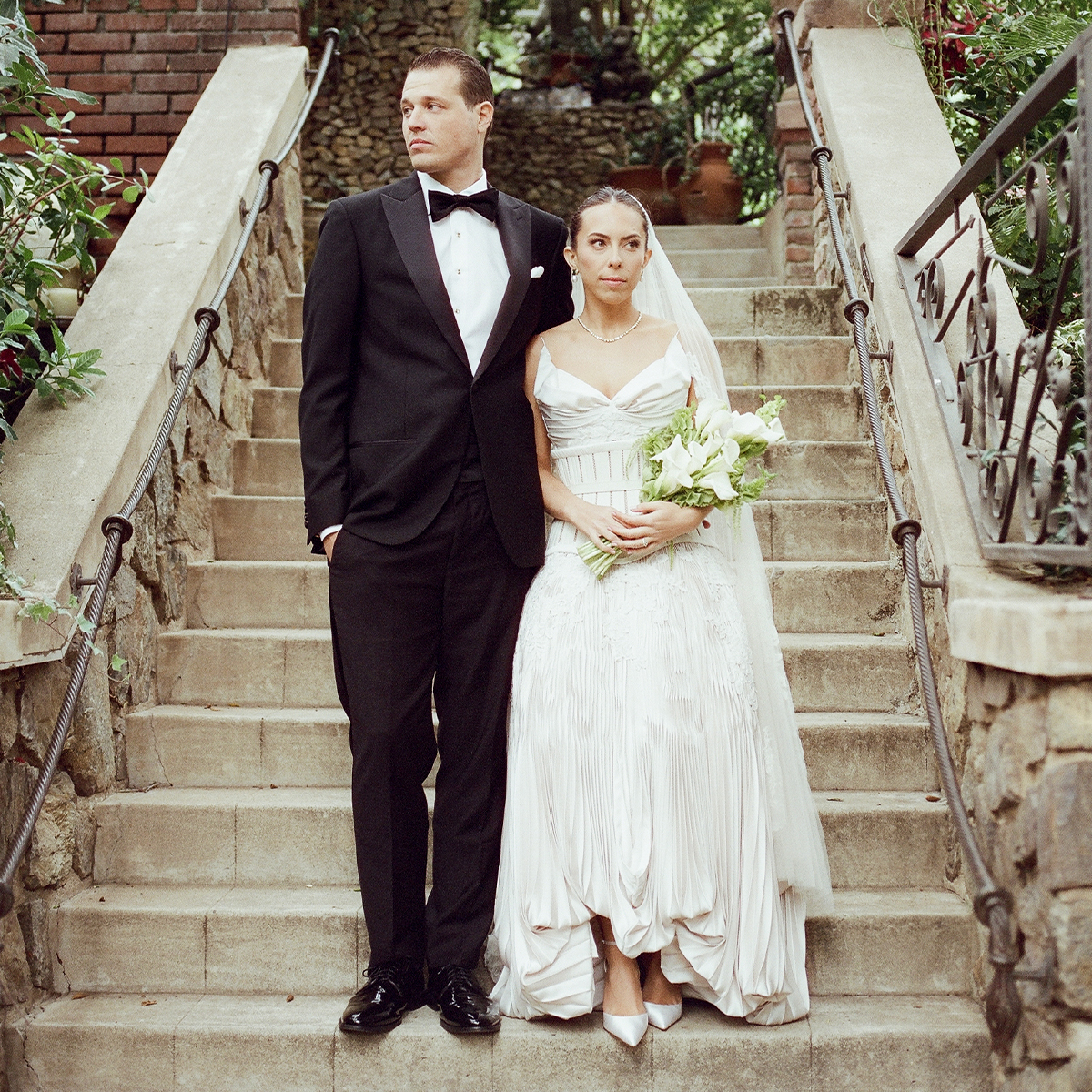 Who What Wear's Editorial Director Wore Danielle Frankel and Prada for Her Los Angeles Wedding at the Houdini Estate
Who What Wear's Editorial Director Wore Danielle Frankel and Prada for Her Los Angeles Wedding at the Houdini EstateSee every detail.
By Kristen Nichols
-
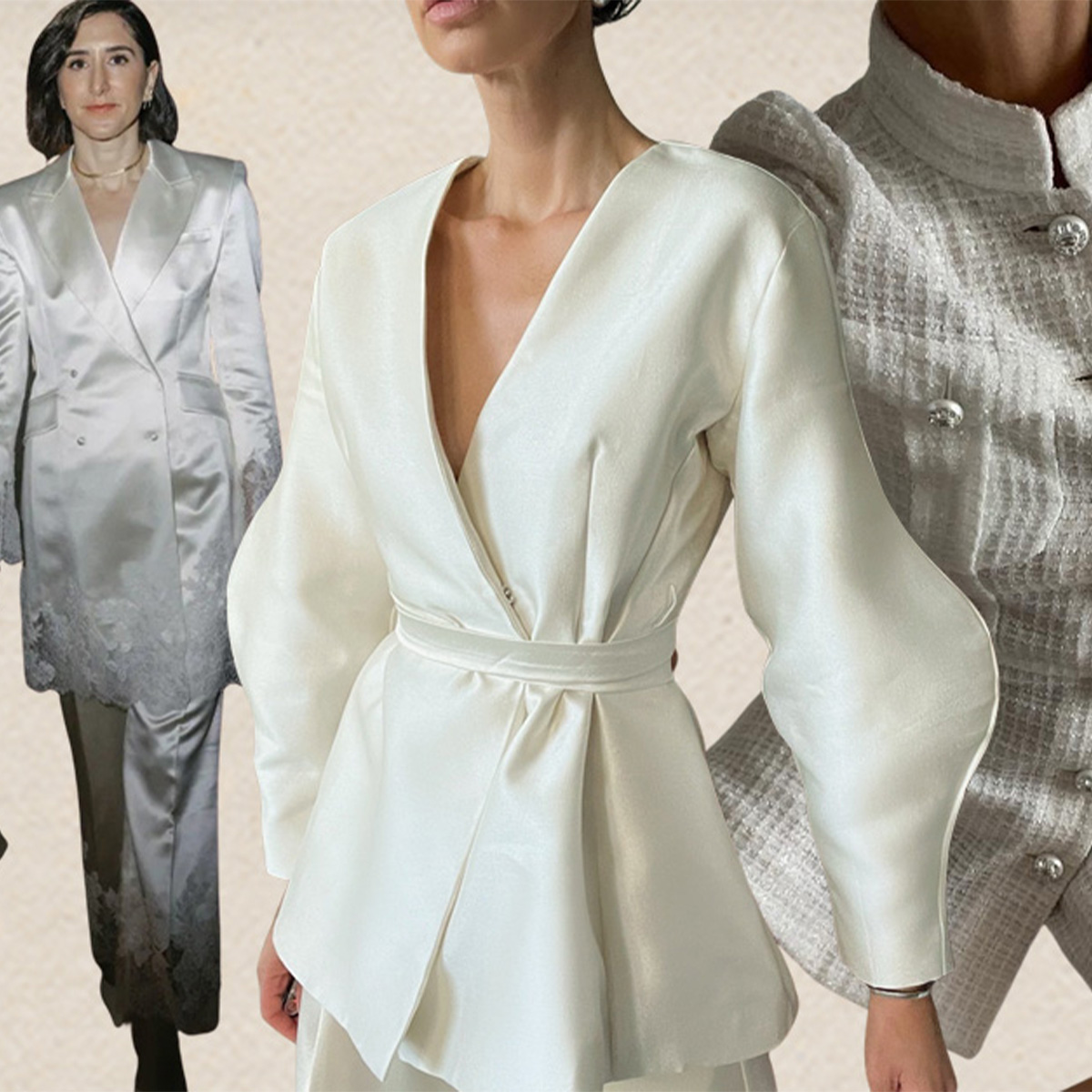 Skip the White Mini: Meet the Cool City Brides Wearing Suits on Their Wedding Days
Skip the White Mini: Meet the Cool City Brides Wearing Suits on Their Wedding DaysCarrie Bradshaw would approve.
By Ana Escalante
-
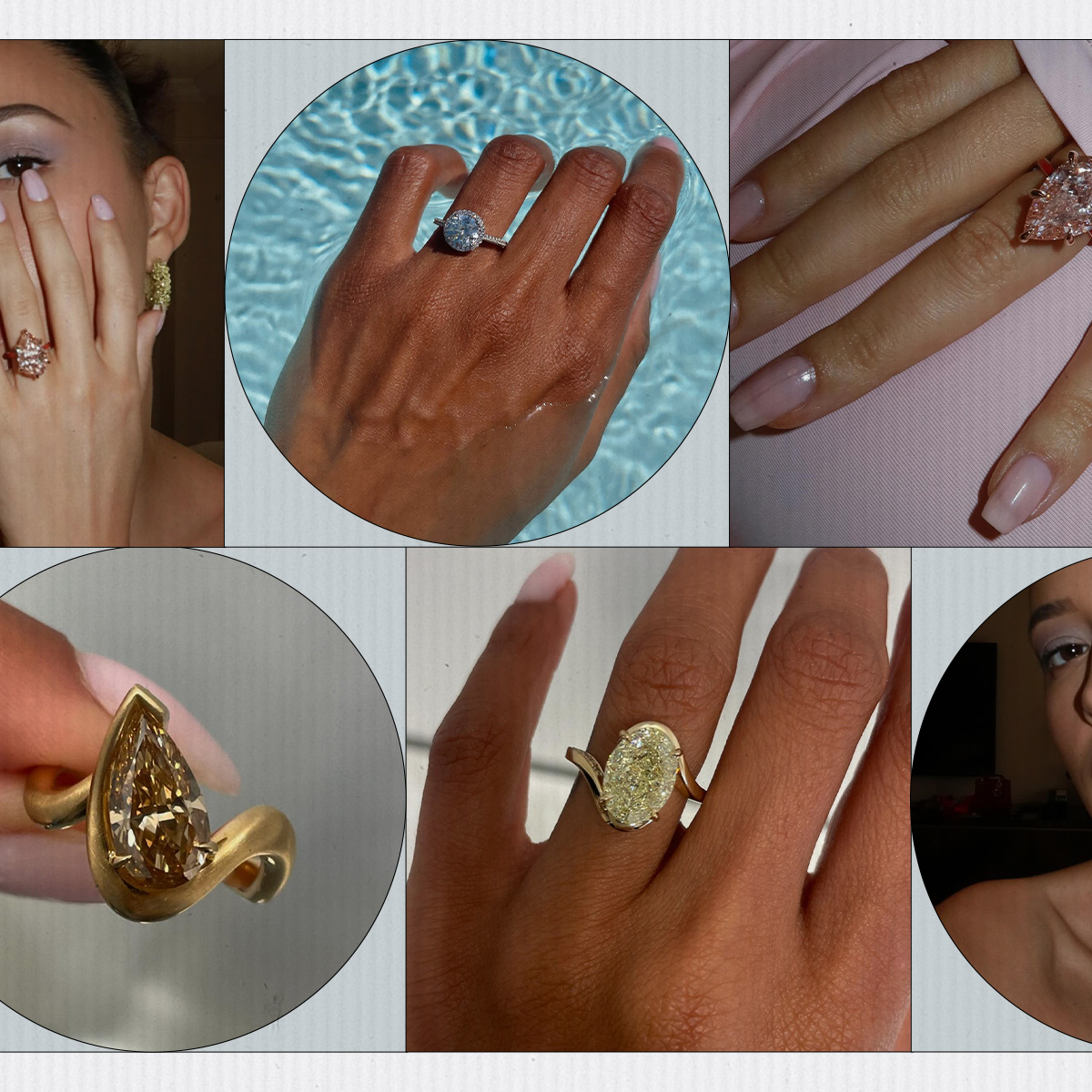 2025's Biggest Engagement Ring Trend Is Already Dividing the Internet
2025's Biggest Engagement Ring Trend Is Already Dividing the InternetMy group chat is heated.
By Ana Escalante
-
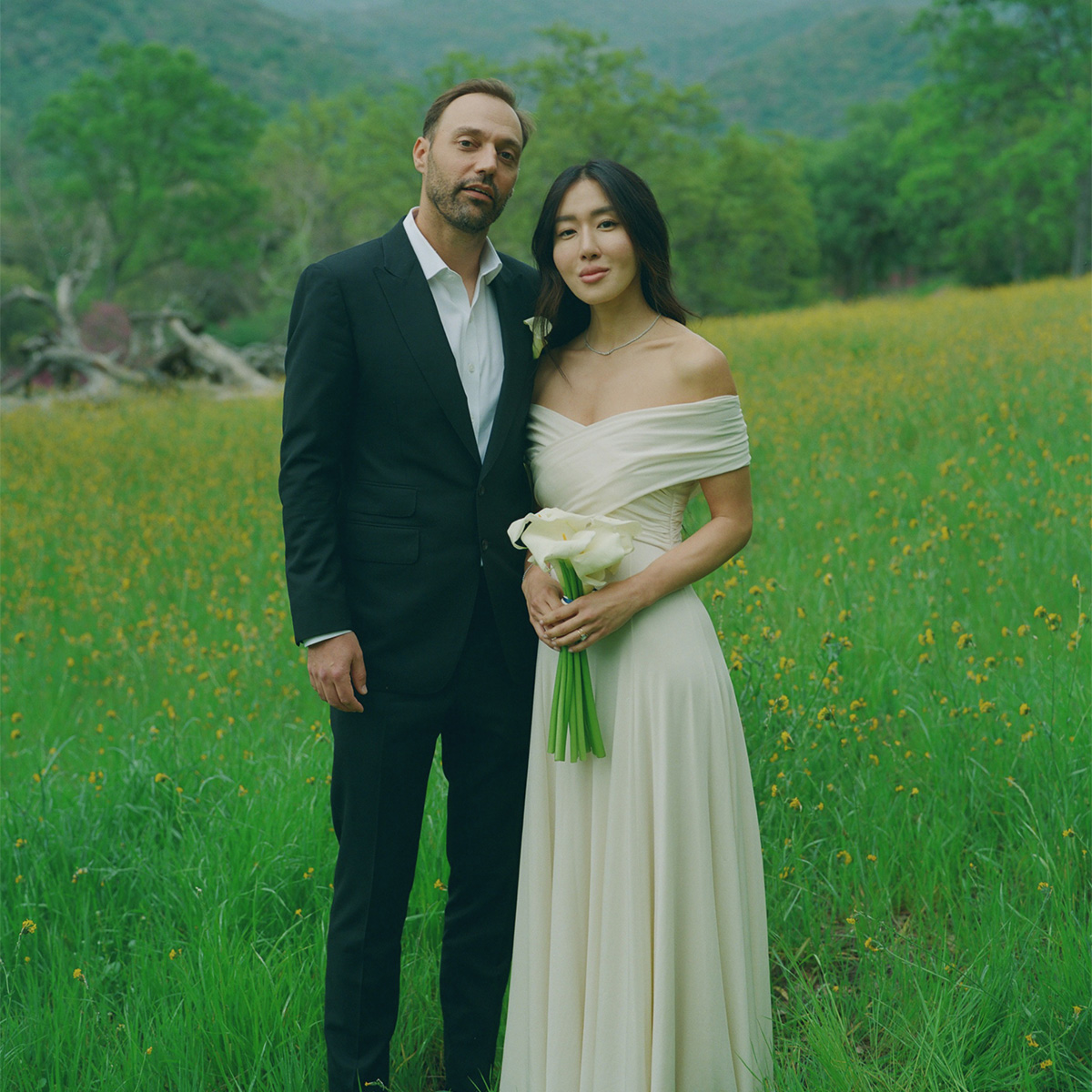 This Celebrity Makeup Artist Wore Khaite and Toteme for Her Intimate Wedding
This Celebrity Makeup Artist Wore Khaite and Toteme for Her Intimate WeddingSee every detail.
By Kristen Nichols
-
 This Fashion Publicist Wore a Saint Laurent Dress and Crystal Heels on Her Wedding Day
This Fashion Publicist Wore a Saint Laurent Dress and Crystal Heels on Her Wedding Day"I can say for certain, when you know, you know."
By Kristen Nichols
-
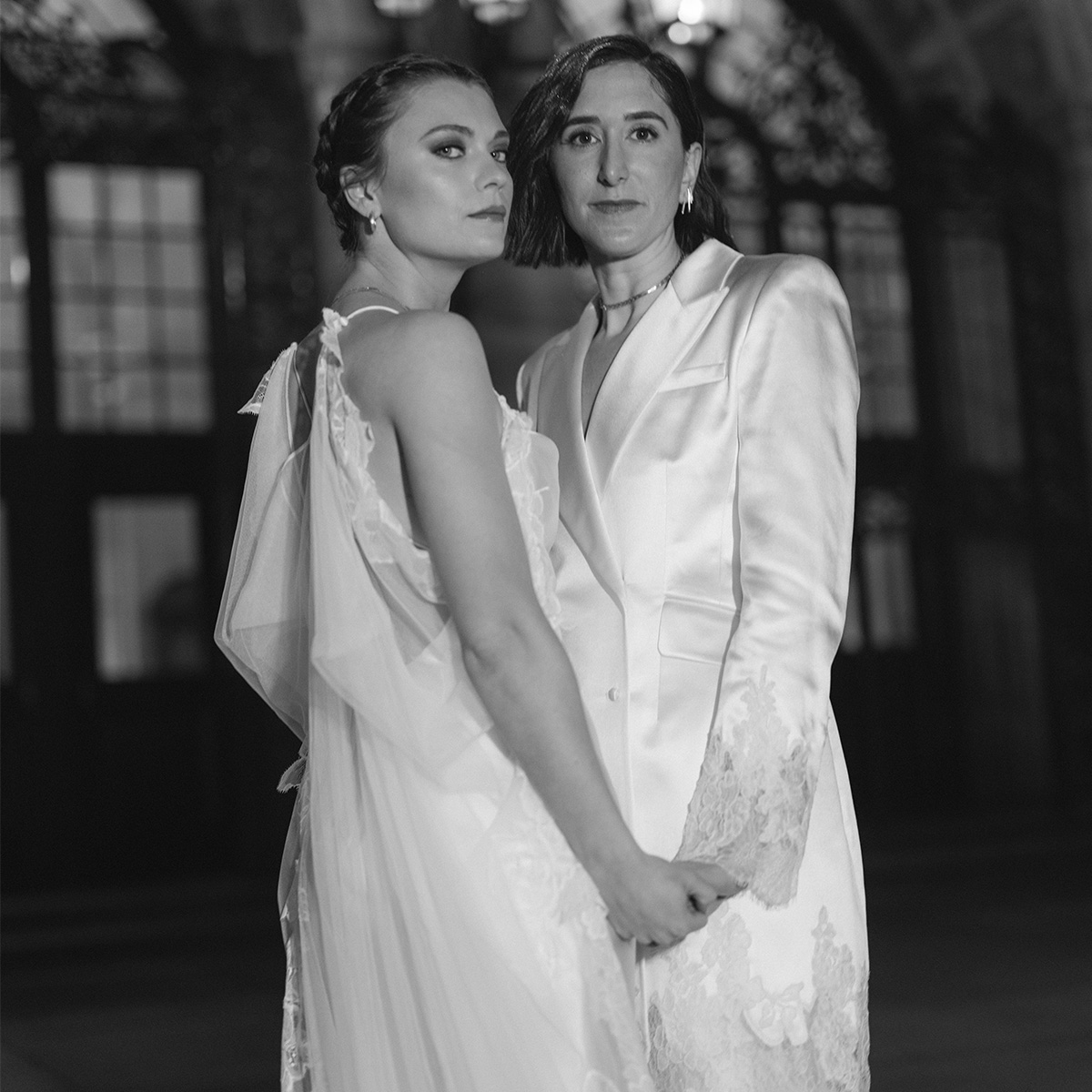 Two Proposals, Complementary Danielle Frankel Looks, and a Surprise Ceremony Set the Scene for This Unique Wedding
Two Proposals, Complementary Danielle Frankel Looks, and a Surprise Ceremony Set the Scene for This Unique WeddingTaking place at the Boston Public Library, it was perfect.
By Lauren Eggertsen
-
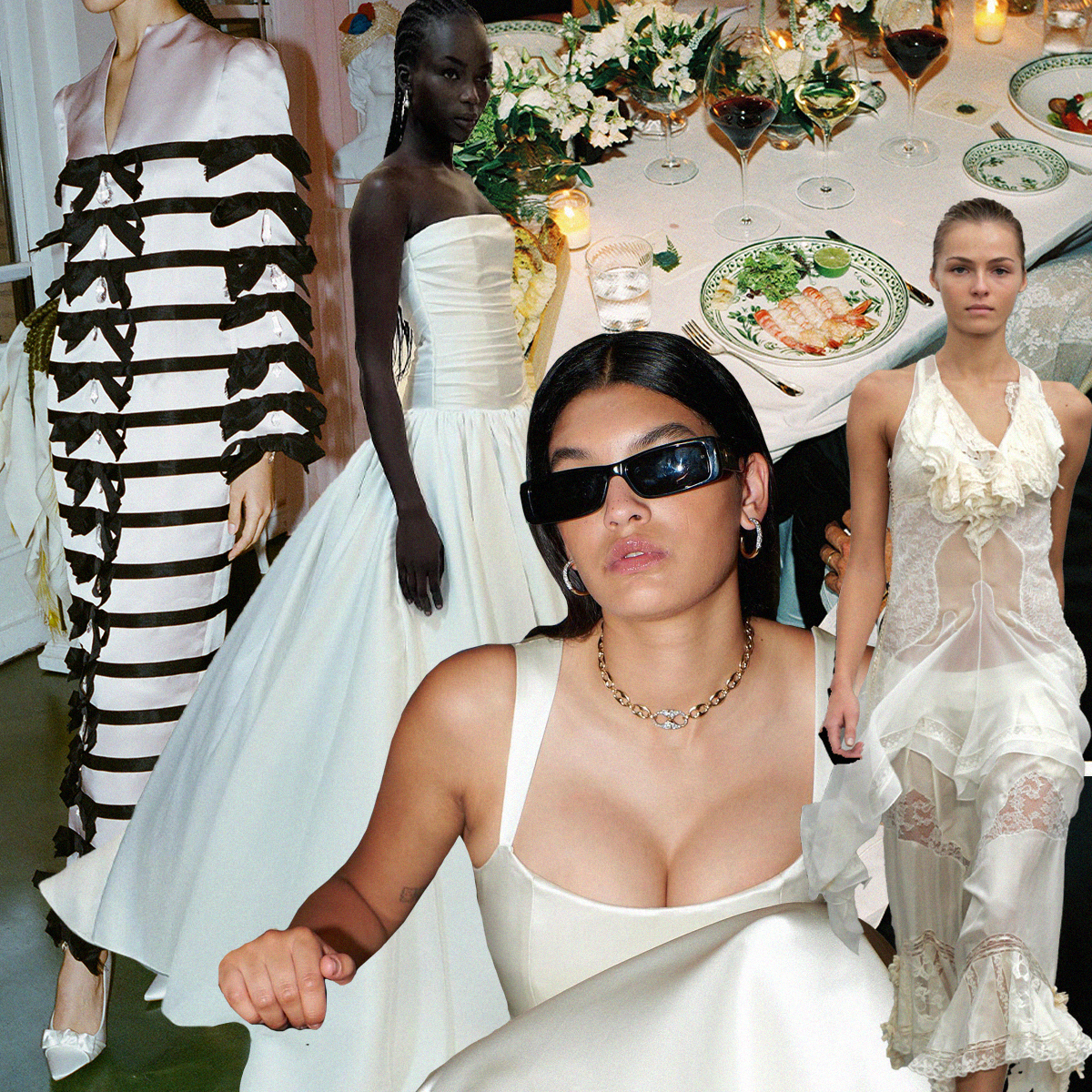 The Wedding Issue 2024
The Wedding Issue 2024Everything that matters in the nuptial space this year.
By Who What Wear
